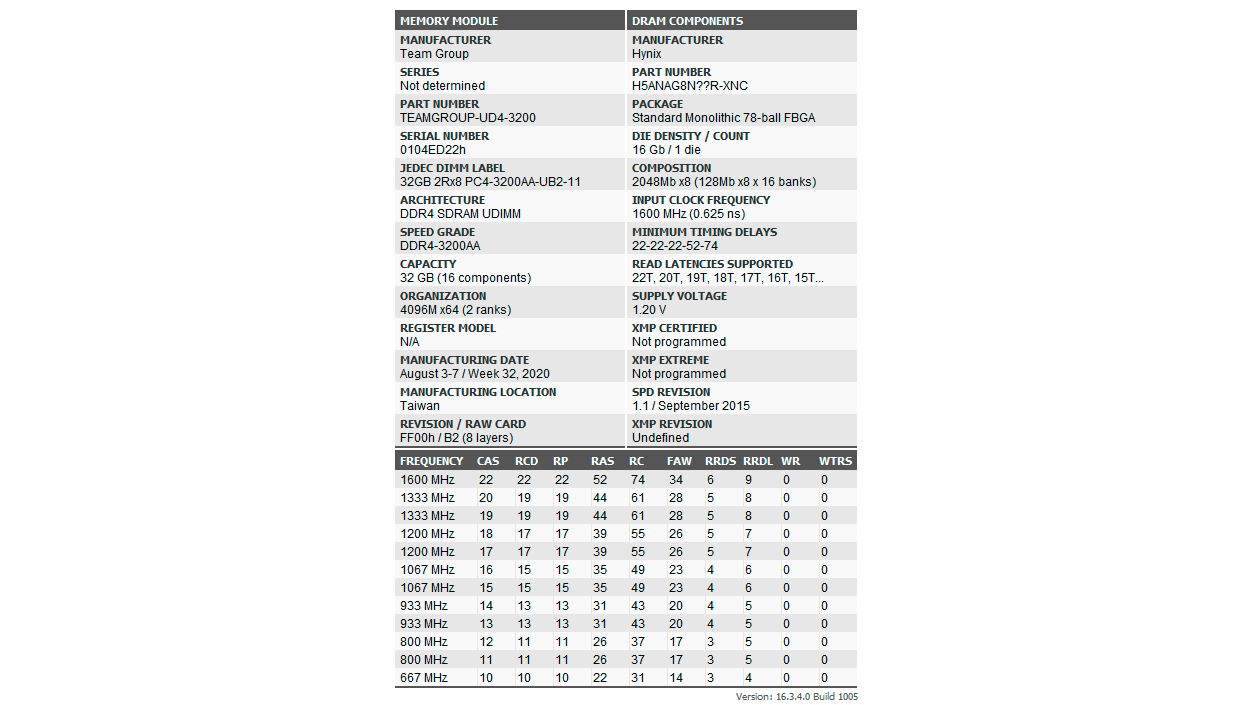Tom's Hardware Verdict
The T-Create Classic 10L DDR4-3200 C22 does its job just fine, it just isn't very fast at it.
Pros
- +
No setup necessary
- +
Runs with 1.2V
- +
Easy on the pockets
Cons
- -
Mediocre performance
- -
Very sloppy timings
- -
Modest overclocking headroom
Why you can trust Tom's Hardware
TeamGroup's new T-Create sub-brand encompasses a new series of memory and SSD products that target content creators and professional consumers. Truth be told, every consumer group has different needs, so there's always room for specialized products on the market. In T-Create's case, there's only one memory lineup so far: the Classic 10L series that only comes in DDR4-2666 and DDR4-3200 flavors with a maximum capacity of 64GB (2x32GB).
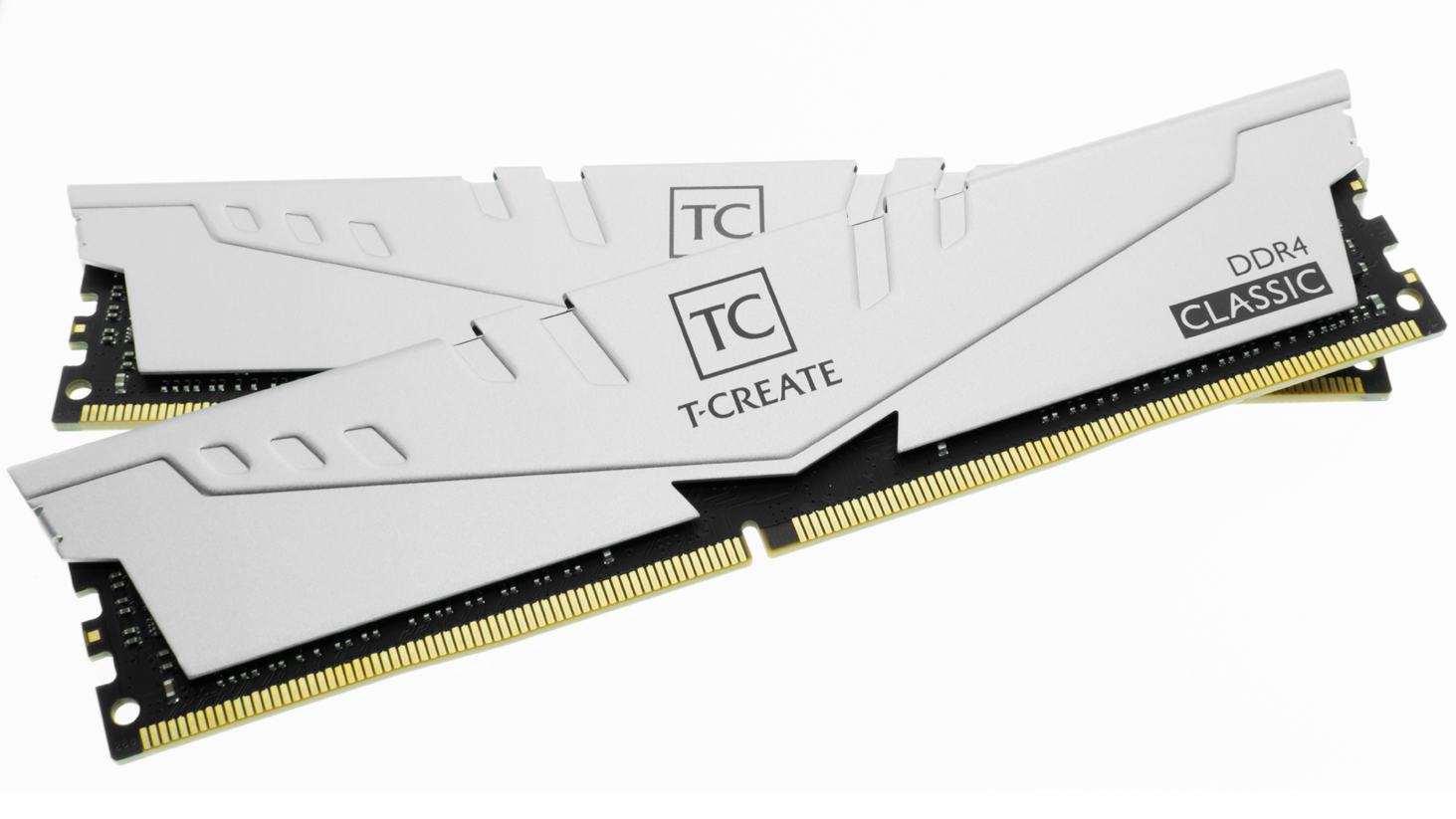
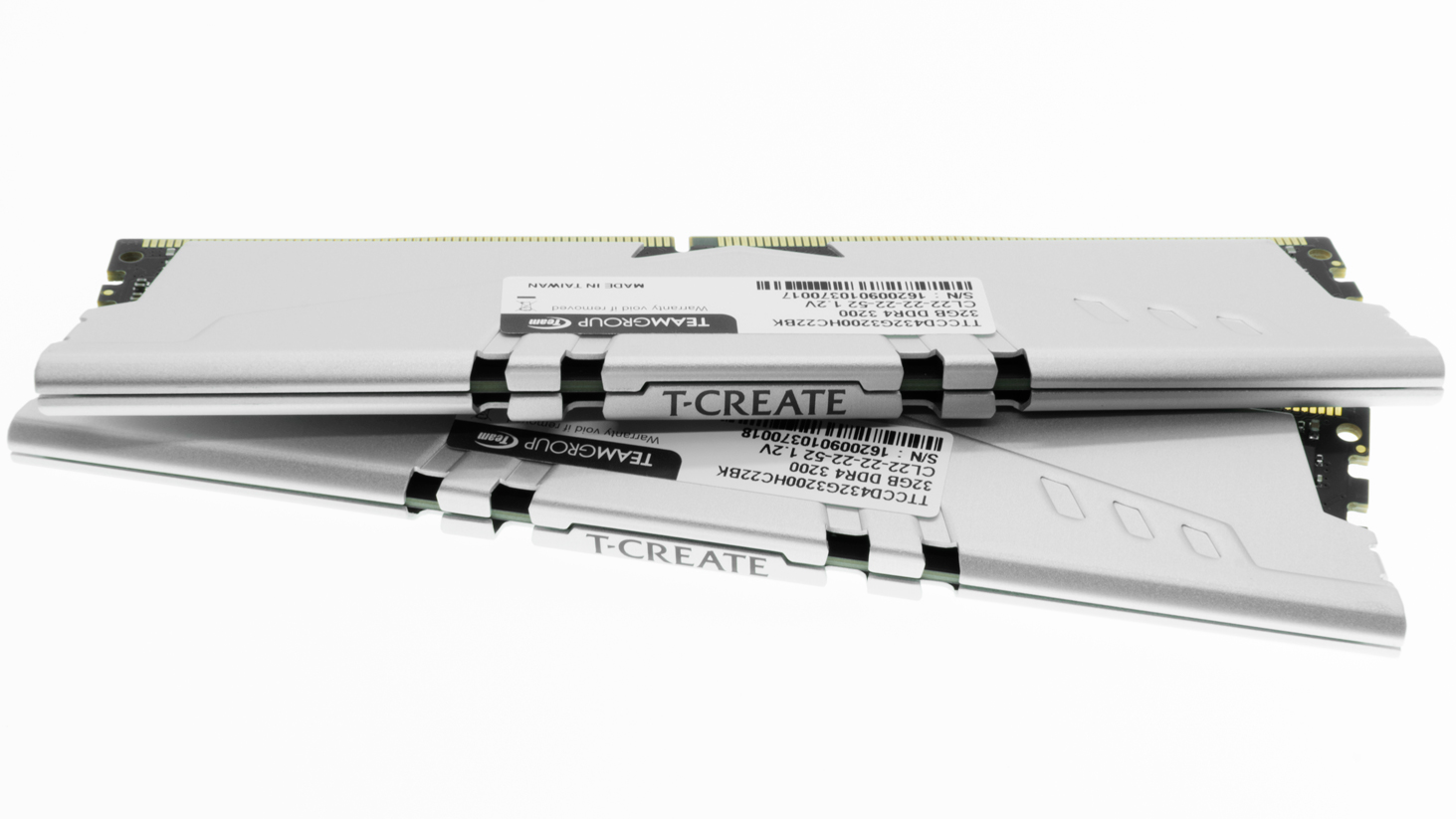

If you're acquainted with TeamGroup's product lines, the Classic 10L will look very familiar to you. That's because the Classic 10L is a carbon copy of the brand's Vulcan Z memory, albeit with a different color scheme and branding. The black PCB is cooled with an aluminum heat spreader on this new iteration that only comes in silver trim. Like the Vulcan Z, the Classic 10L retains the low-profile design with a height that measures 32mm (1.26 inches), so the memory modules are just barely taller than a bare memory stick without a heat spreader.
The dual-channel 64GB package is made up of two dual-rank 32GB memory modules. Although Thaiphoon Burner identifies the Classic 10L with an eight-layer PCB, the memory's product page points to a 10-layer design. The integrated circuits (ICs) are evidently from Hynix, however, though the software failed to pick up the chips' exact model (they could be CMR).
The Classic 10L doesn't feature XMP profiles – the memory is binned to run at the designated frequency without any user intervention. Our sample operates at DDR4-3200 with 22-22-22-52 timings and a 1.2V DRAM voltage. For more on timings and frequency considerations, see our PC Memory 101 feature, as well as our How to Shop for RAM feature.
Comparison Hardware
| Memory Kit | Part Number | Capacity | Data Rate | Primary Timings | Voltage | Warranty |
|---|---|---|---|---|---|---|
| Patriot Viper Steel | PVS464G360C8K | 2 x 32GB | DDR4-3600 (XMP) | 18-20-20-40 (2T) | 1.35 Volts | Lifetime |
| Crucial Ballistix | BL2K32G32C16U4W | 2 x 32GB | DDR4-3200 (XMP) | 16-18-18-36 (2T) | 1.35 Volts | Lifetime |
| TeamGroup T-Create Classic 10L | TTCCD464G3200HC22DC01 | 2 x 32GB | DDR4-3200 (XMP) | 22-22-22-52 (2T) | 1.20 Volts | Lifetime |
Our Intel test system consists of an Intel Core i9-10900K and Asus ROG Maximus XII Apex on the 0901 firmware. On the opposite end, the AMD testbed leverages an AMD Ryzen 5 3600 and ASRock B550 Taichi with the 1.30 firmware. The MSI GeForce RTX 2080 Ti Gaming Trio handles the graphical duties for both platforms.
Intel Performance
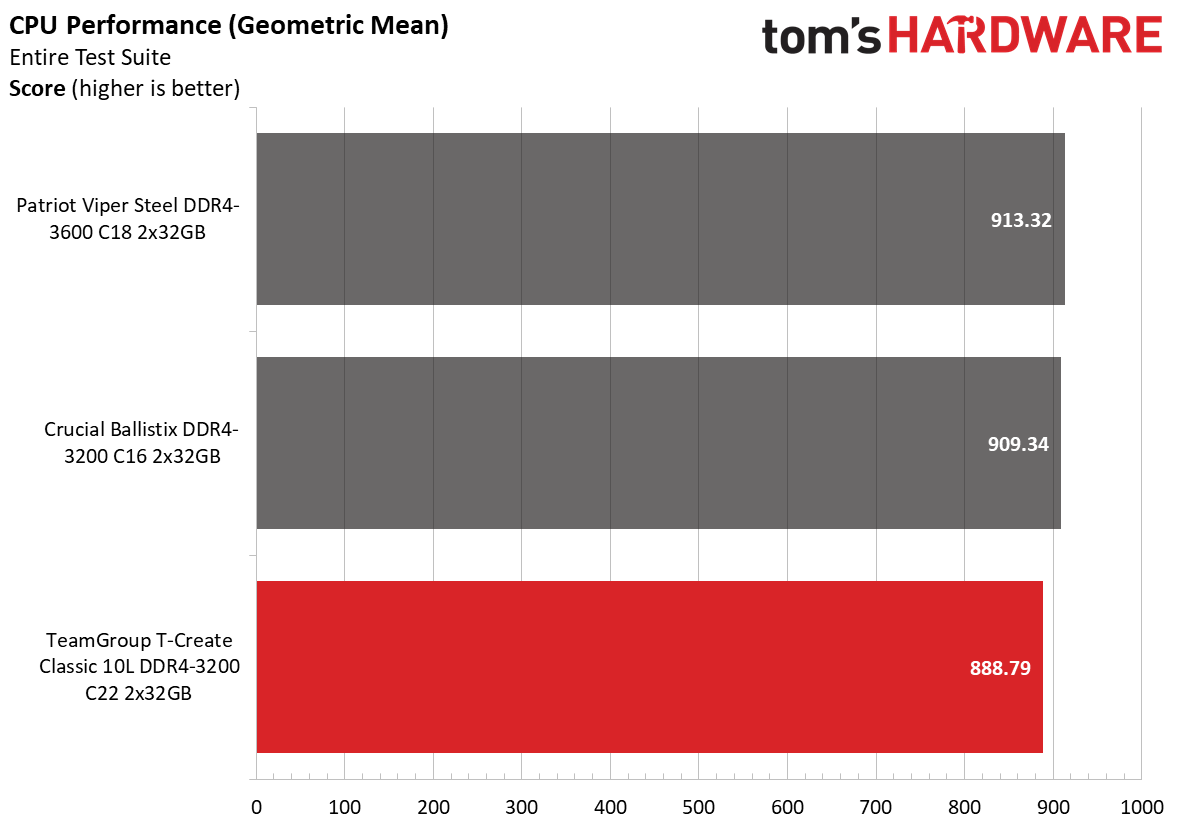
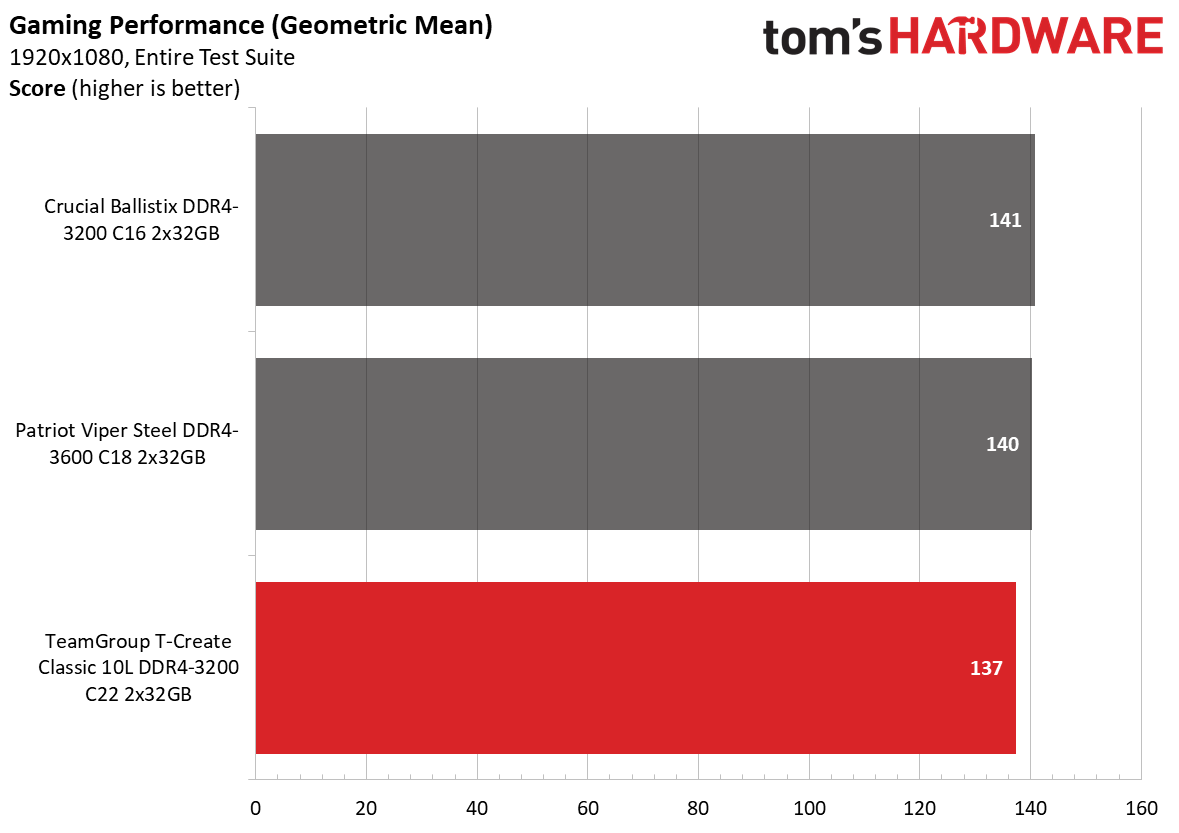
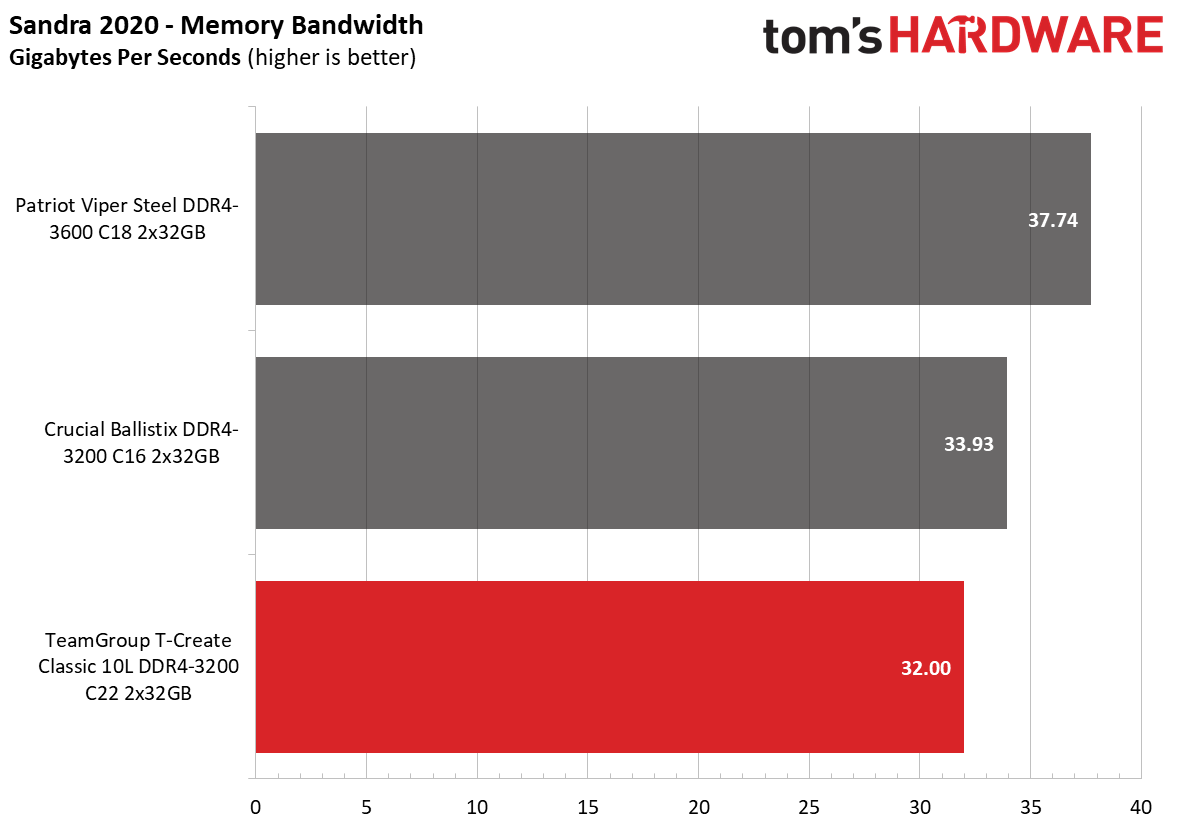
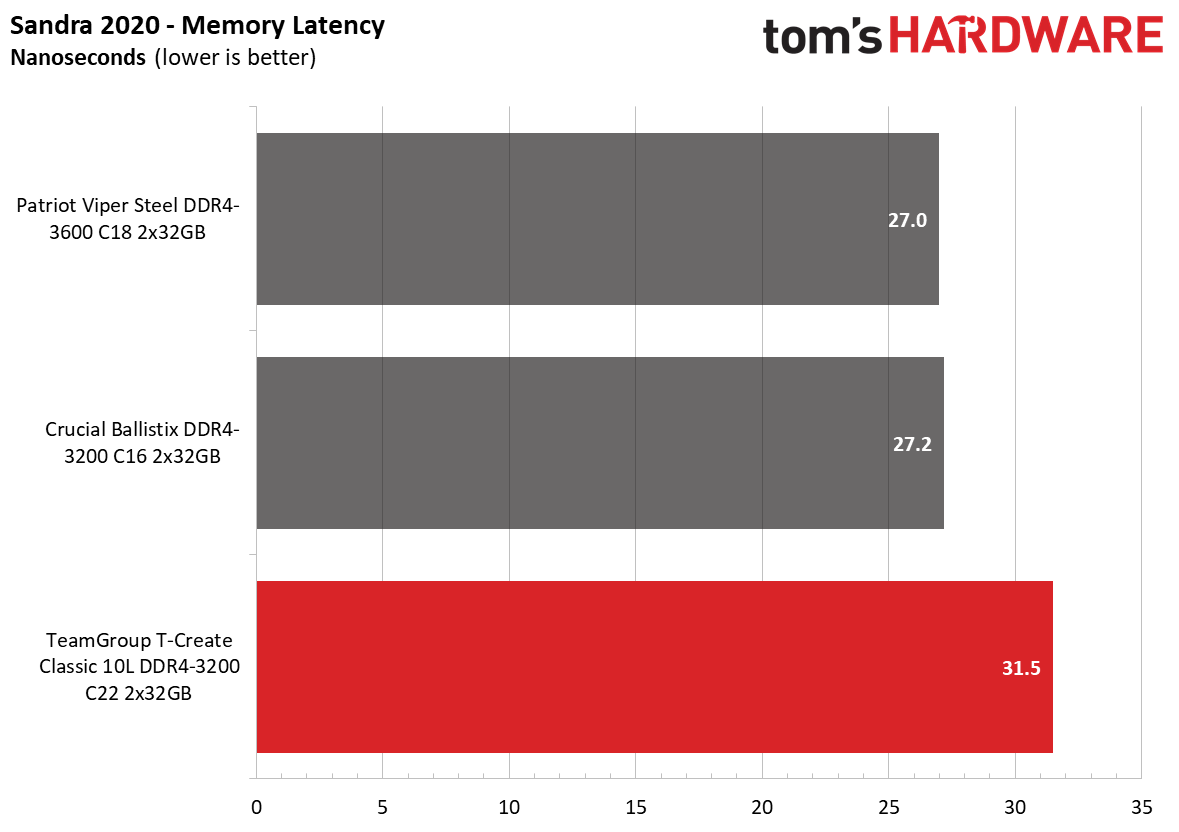
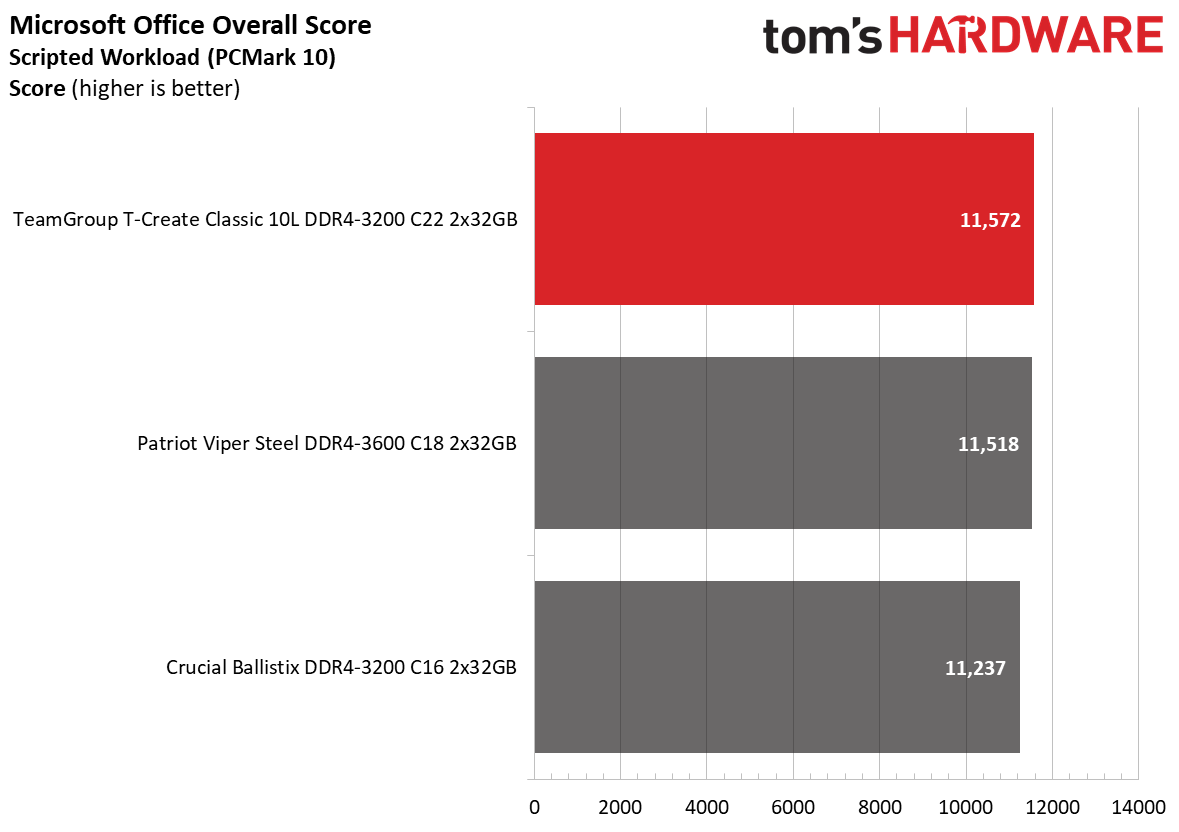
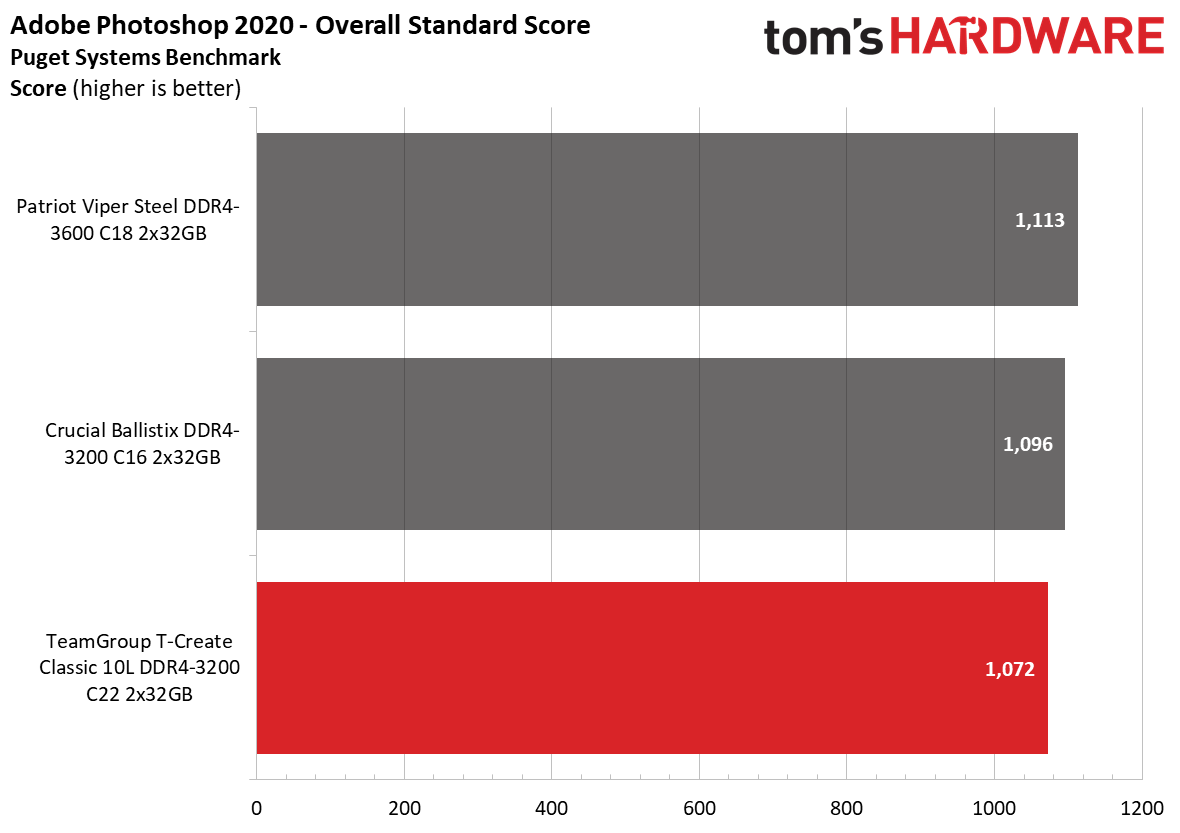
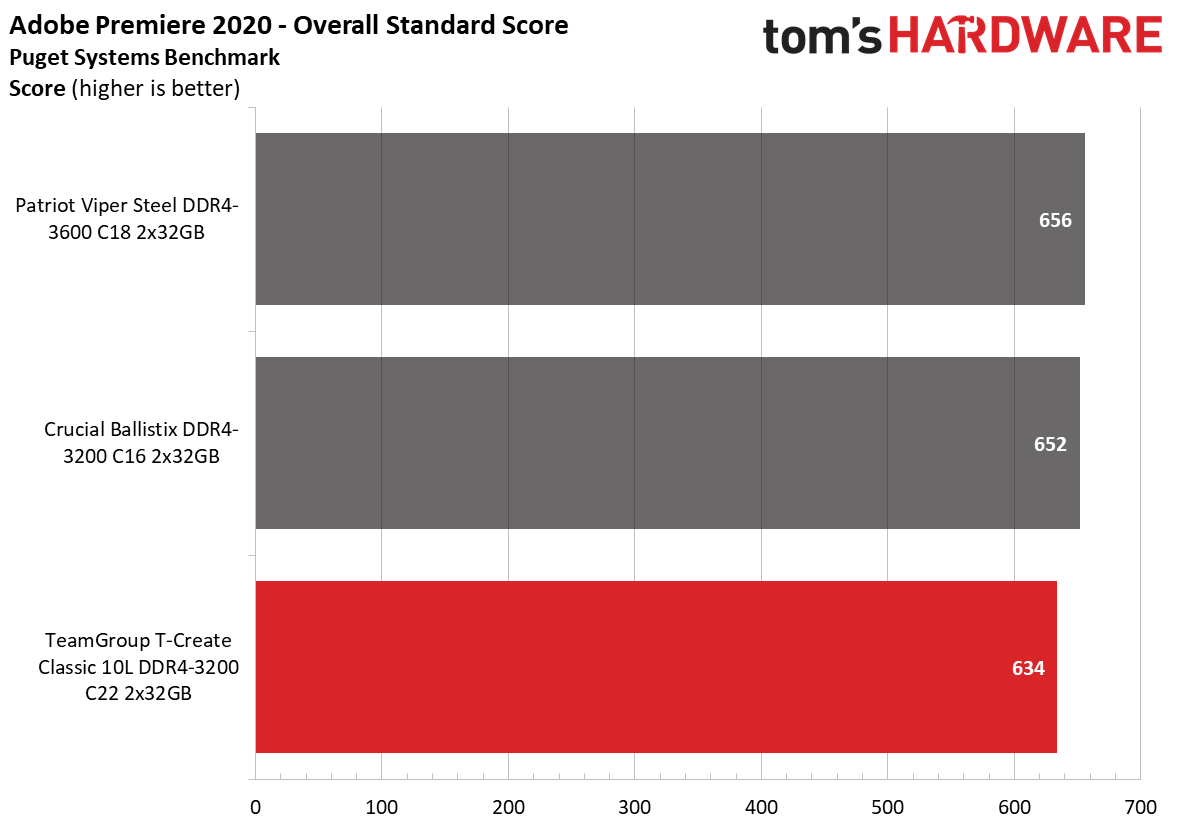
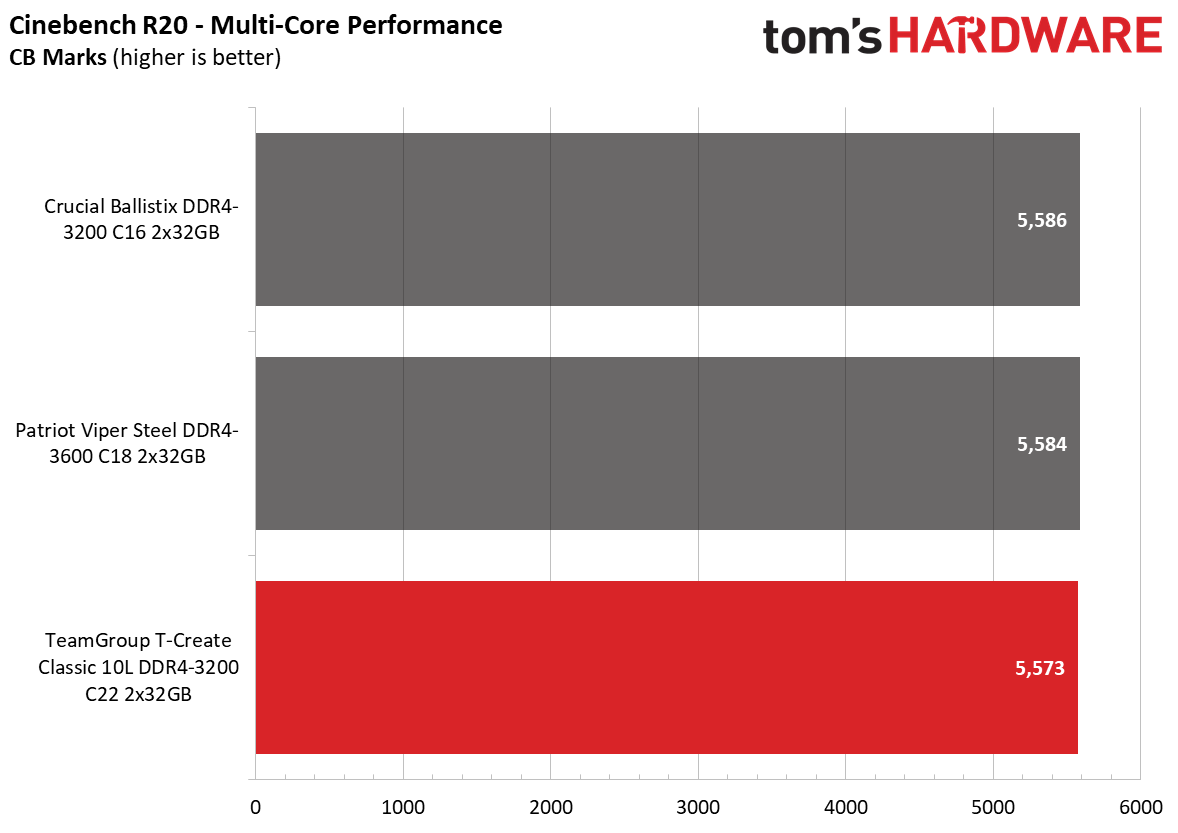


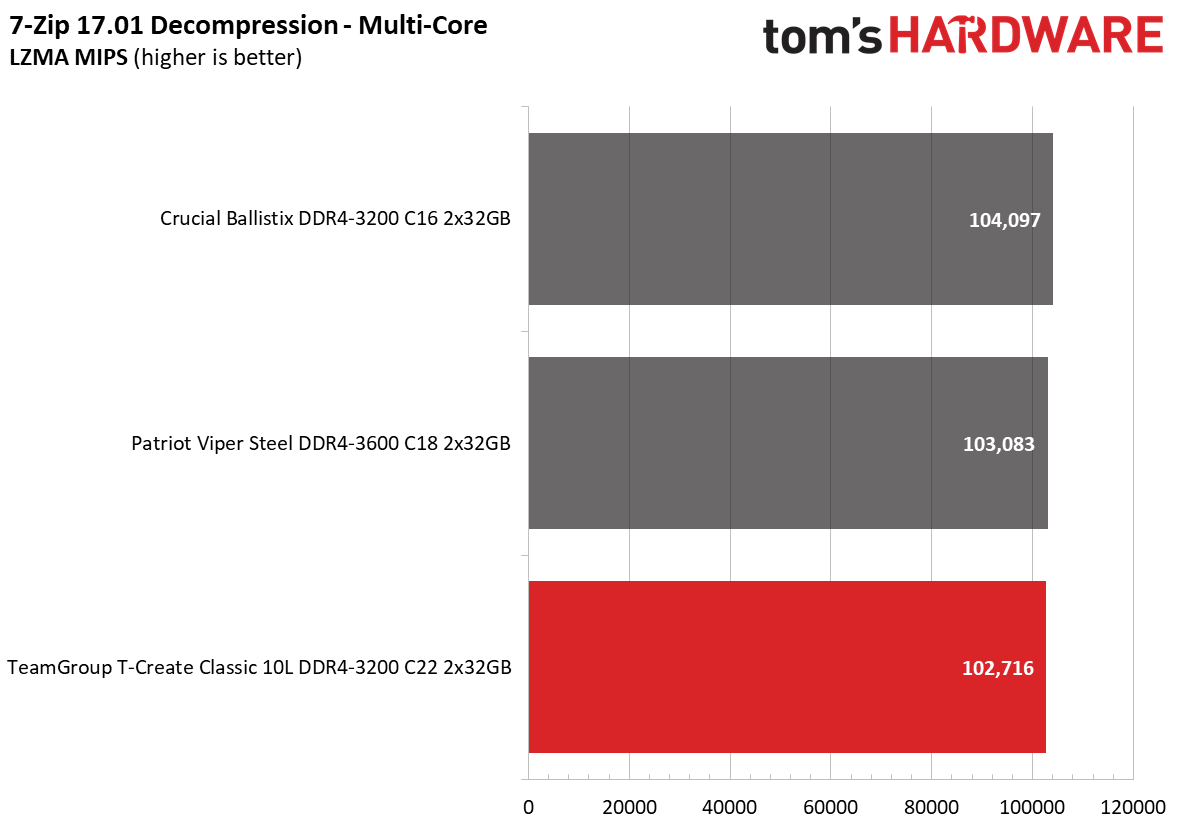
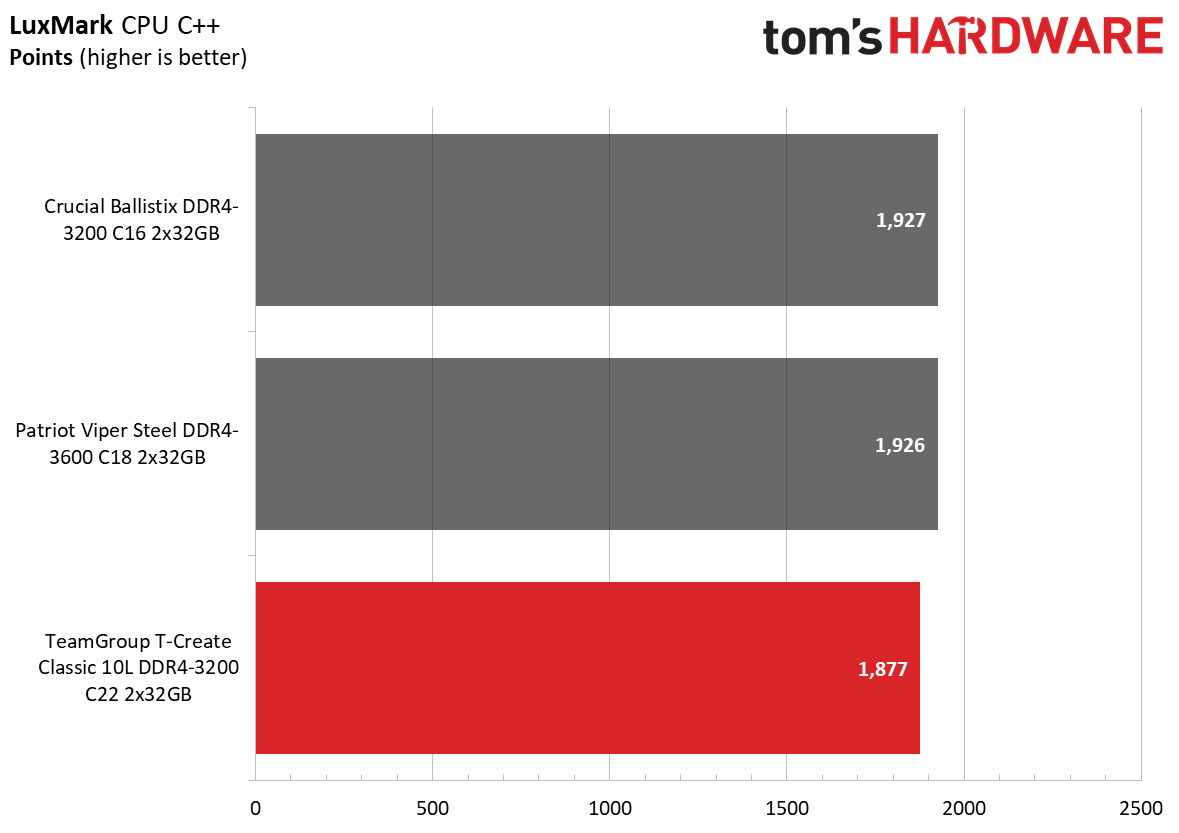


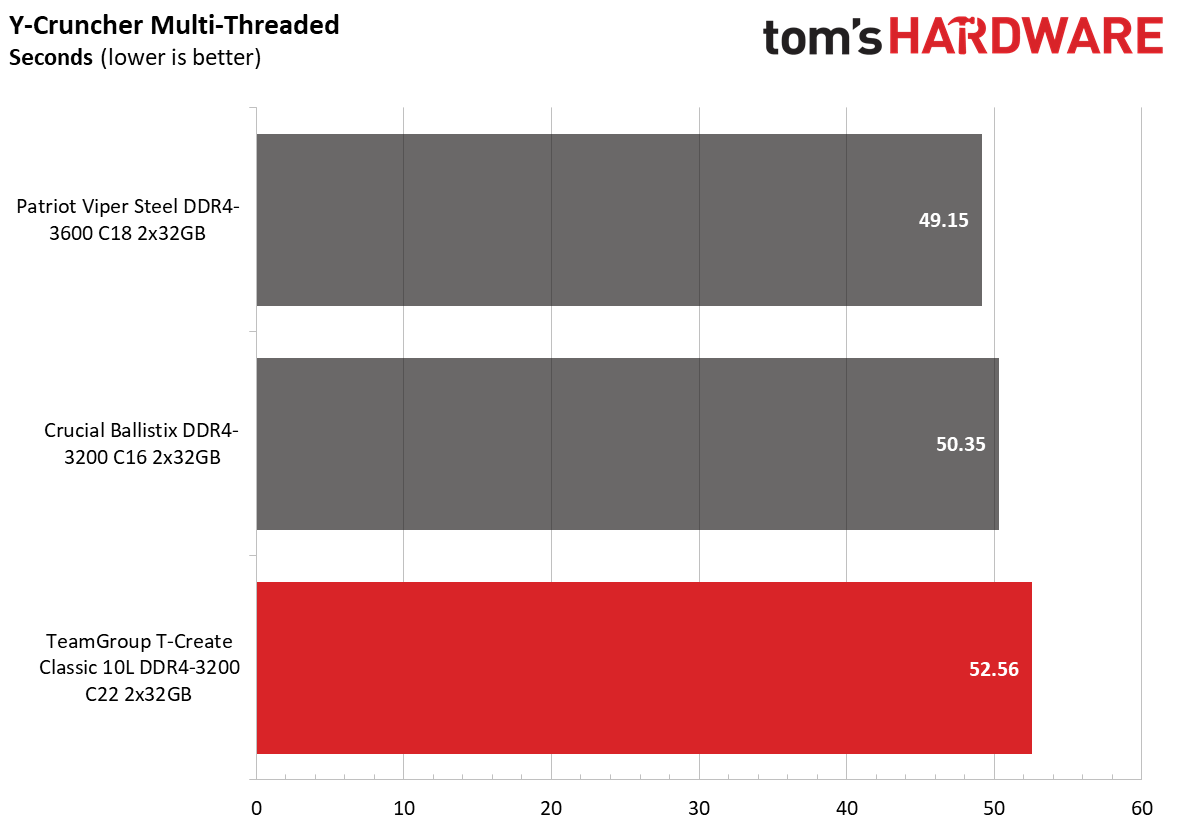

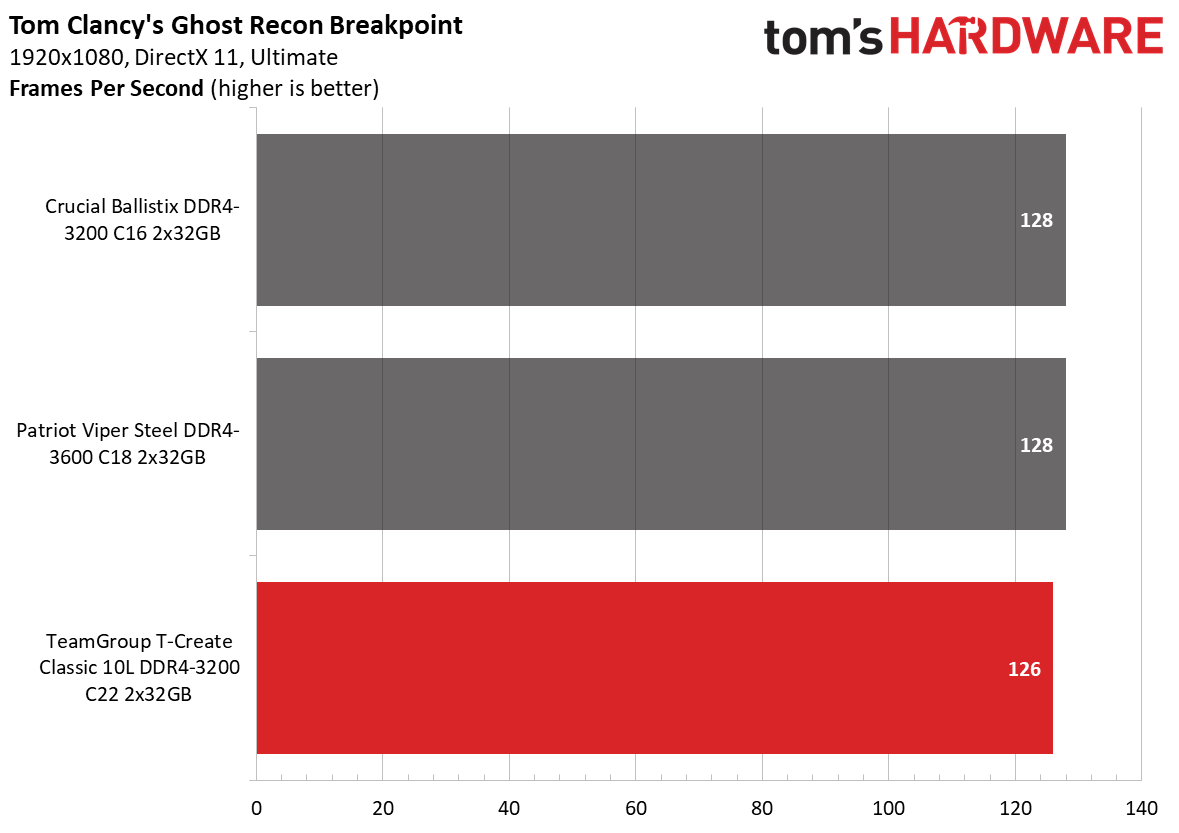
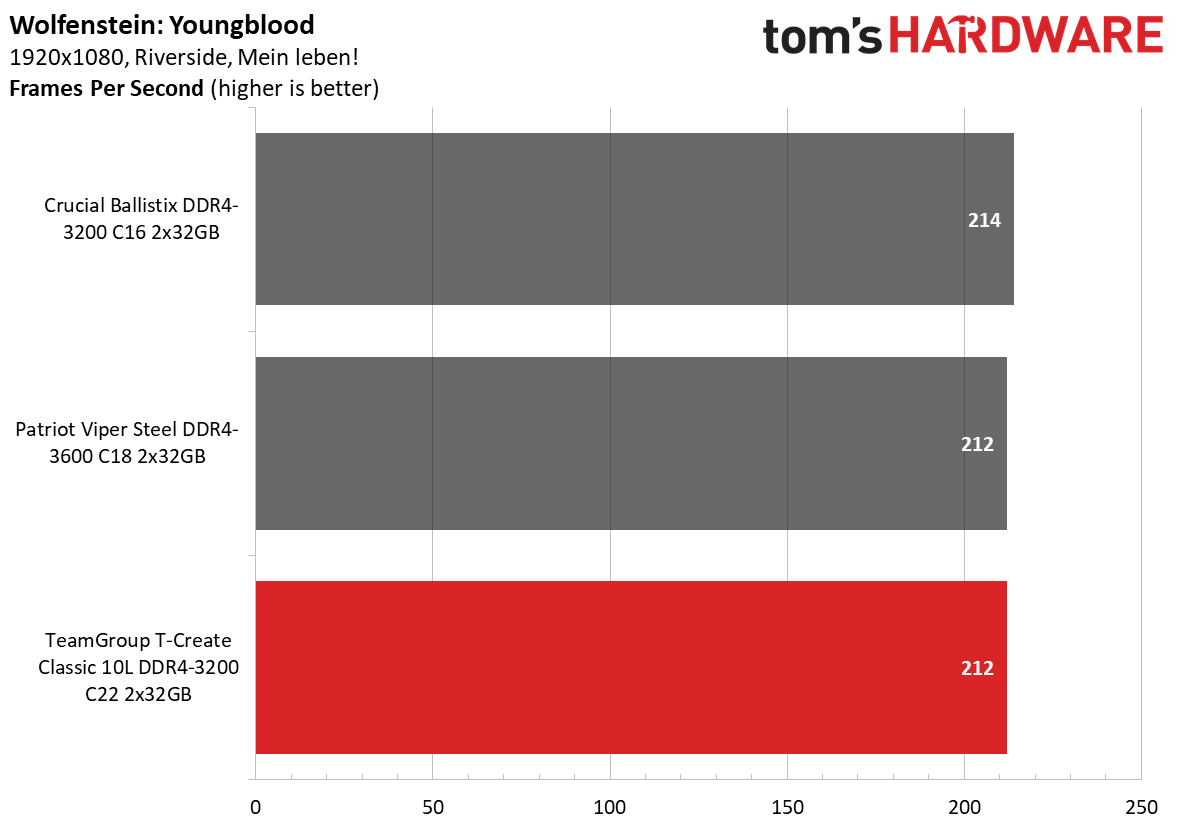
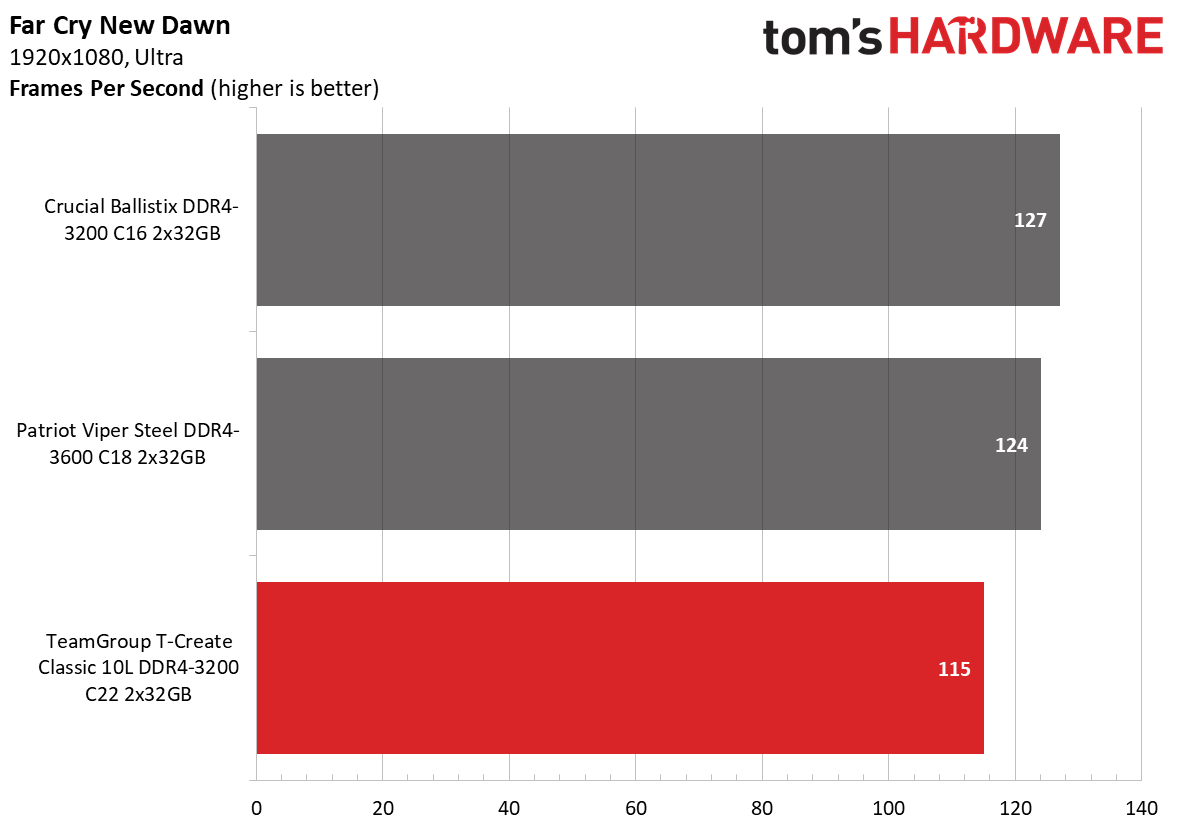
With sloppy timings, it wasn't a surprise to find the Classic 10L memory kit at the bottom of the RAM benchmarks. However, it showed a shimmer of light in the Microsoft Office tests where the memory kit bested both of its faster rivals.
AMD Performance
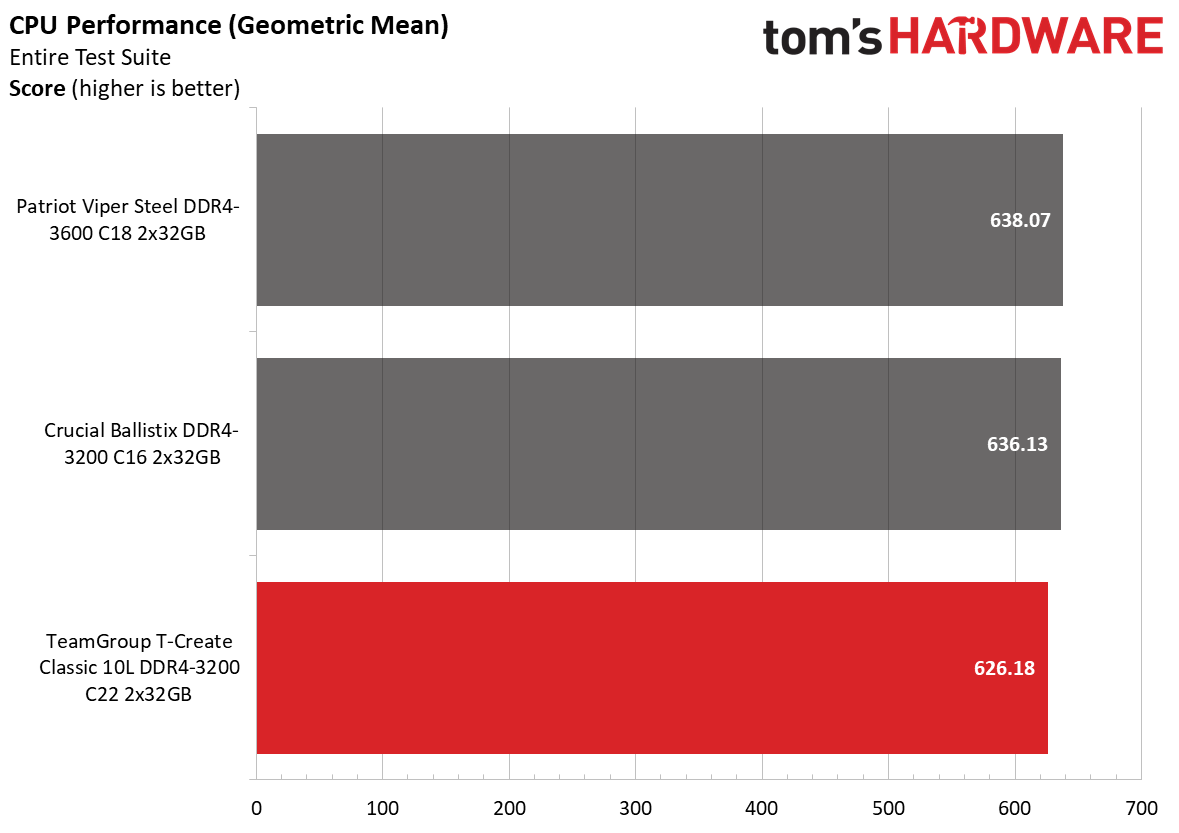
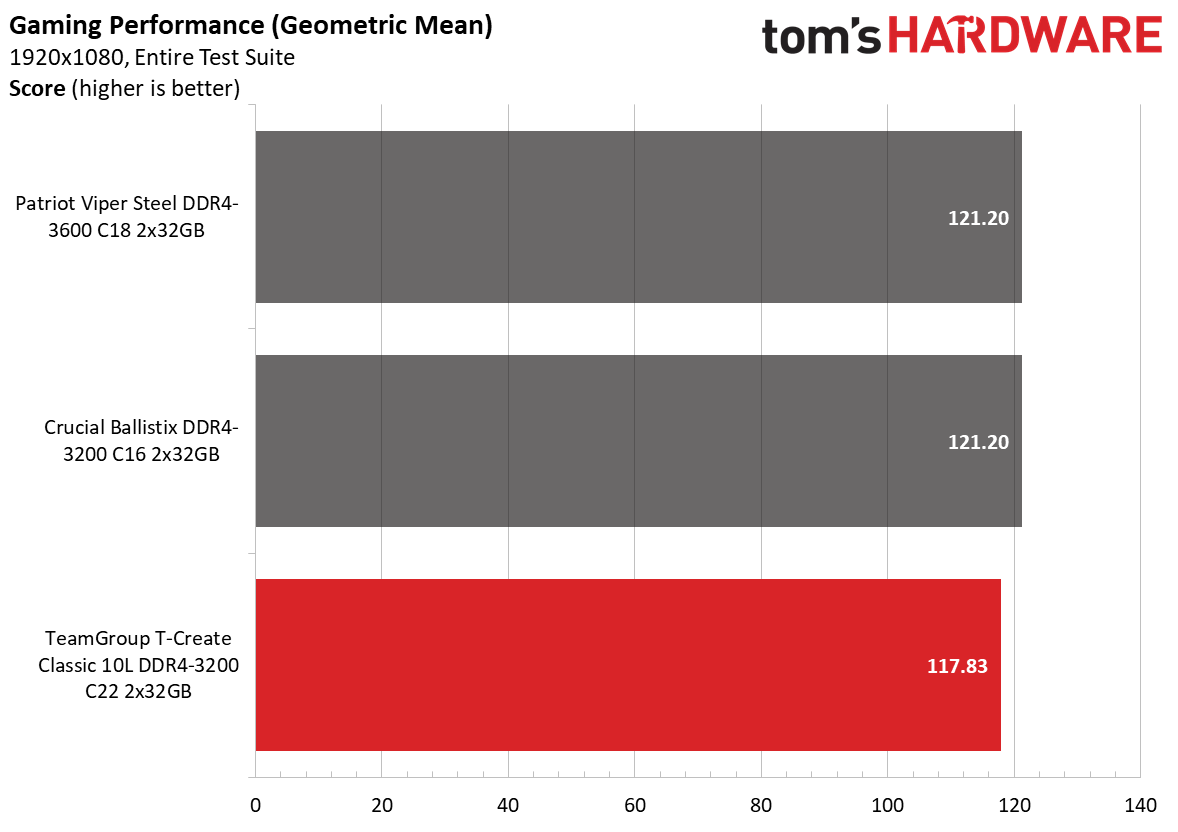
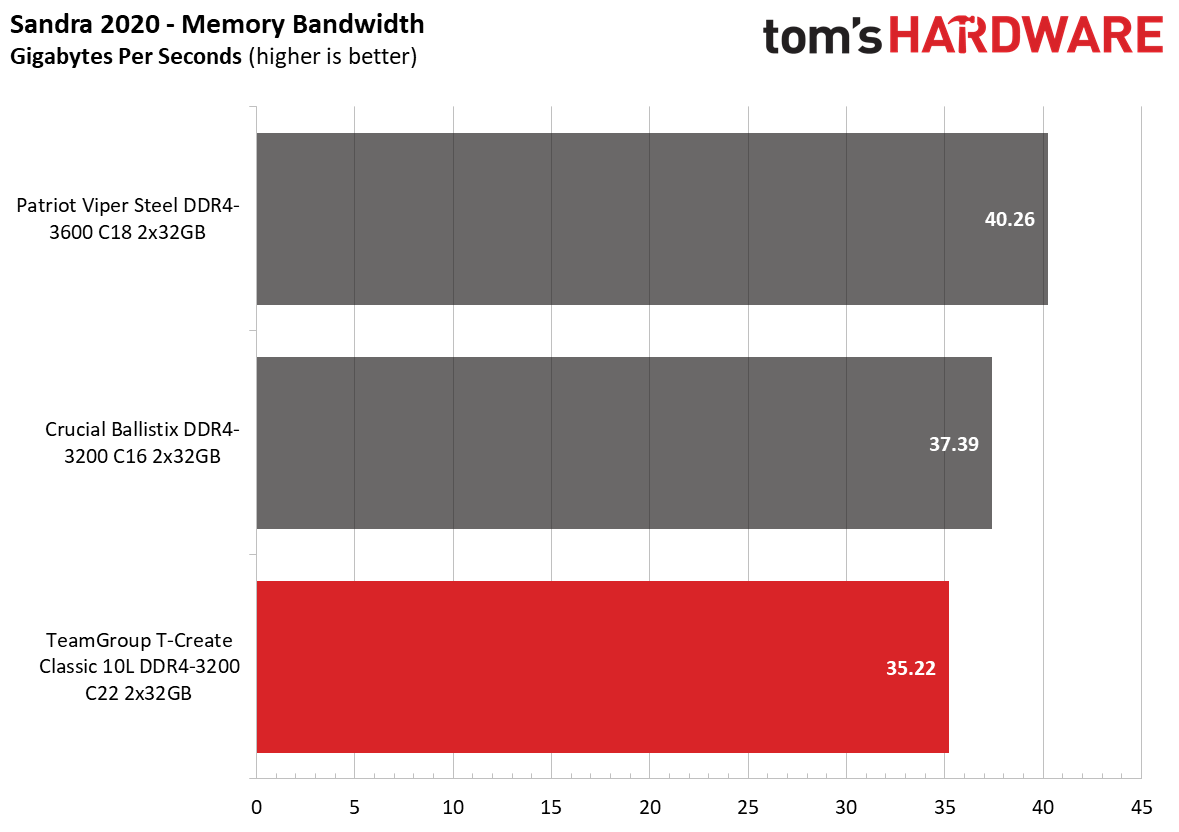
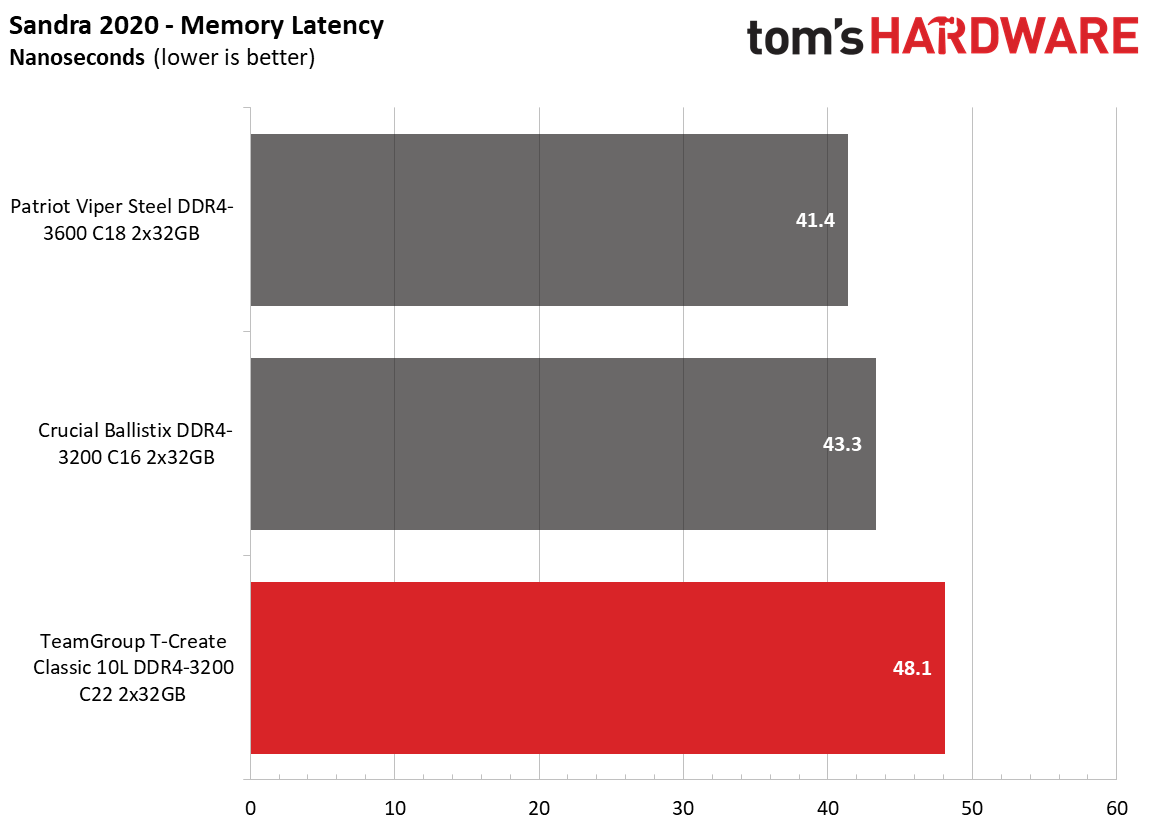

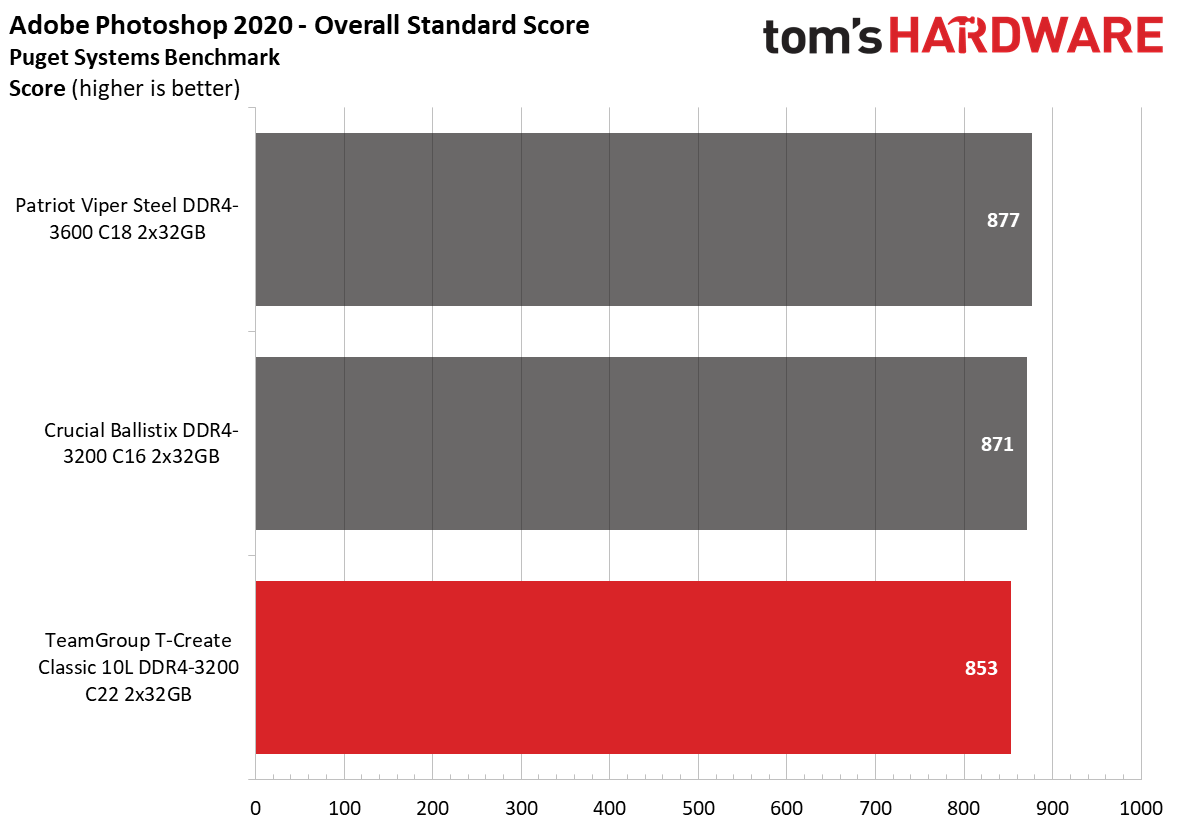

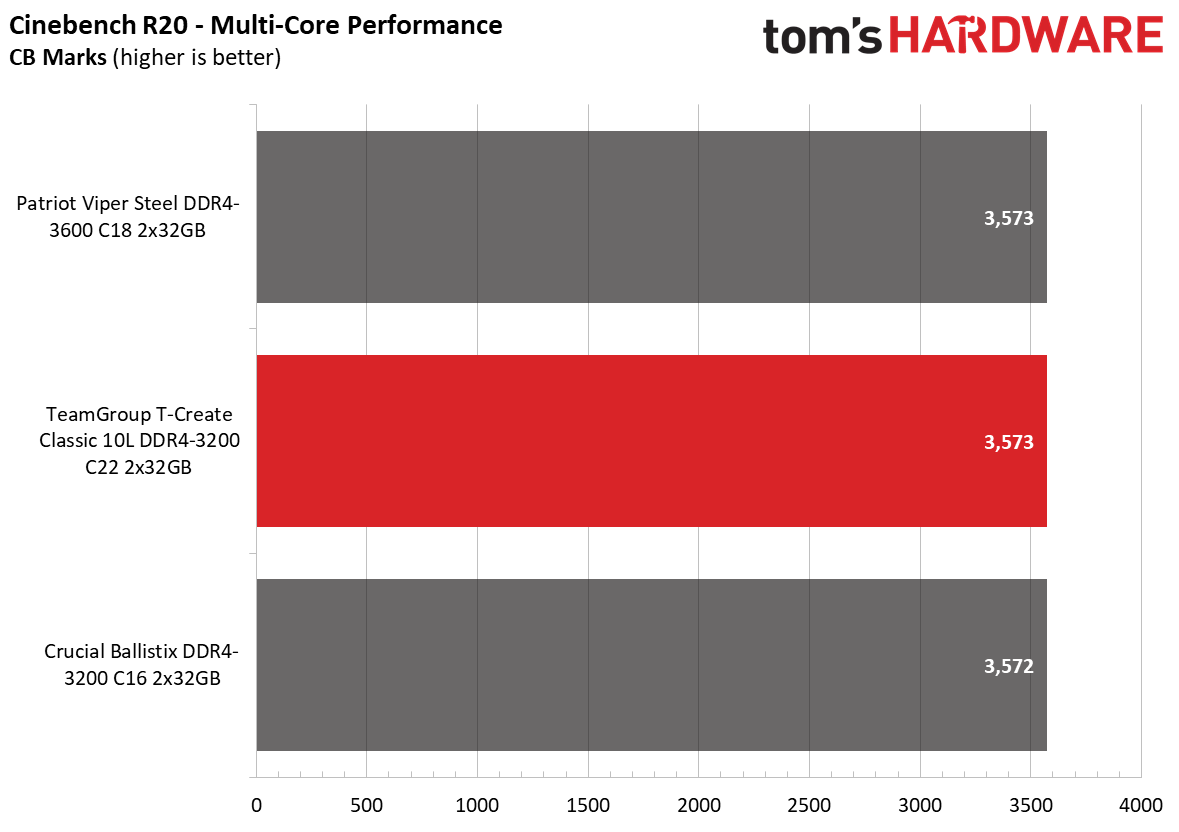
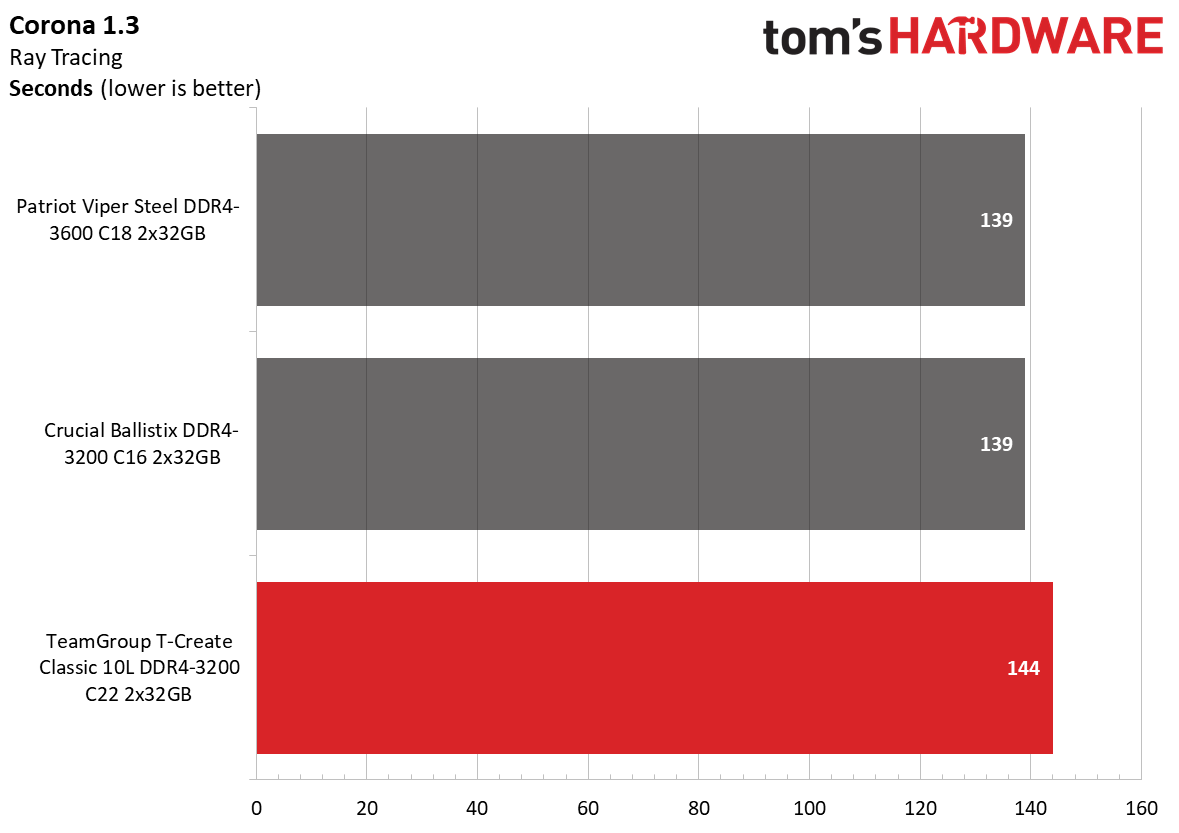


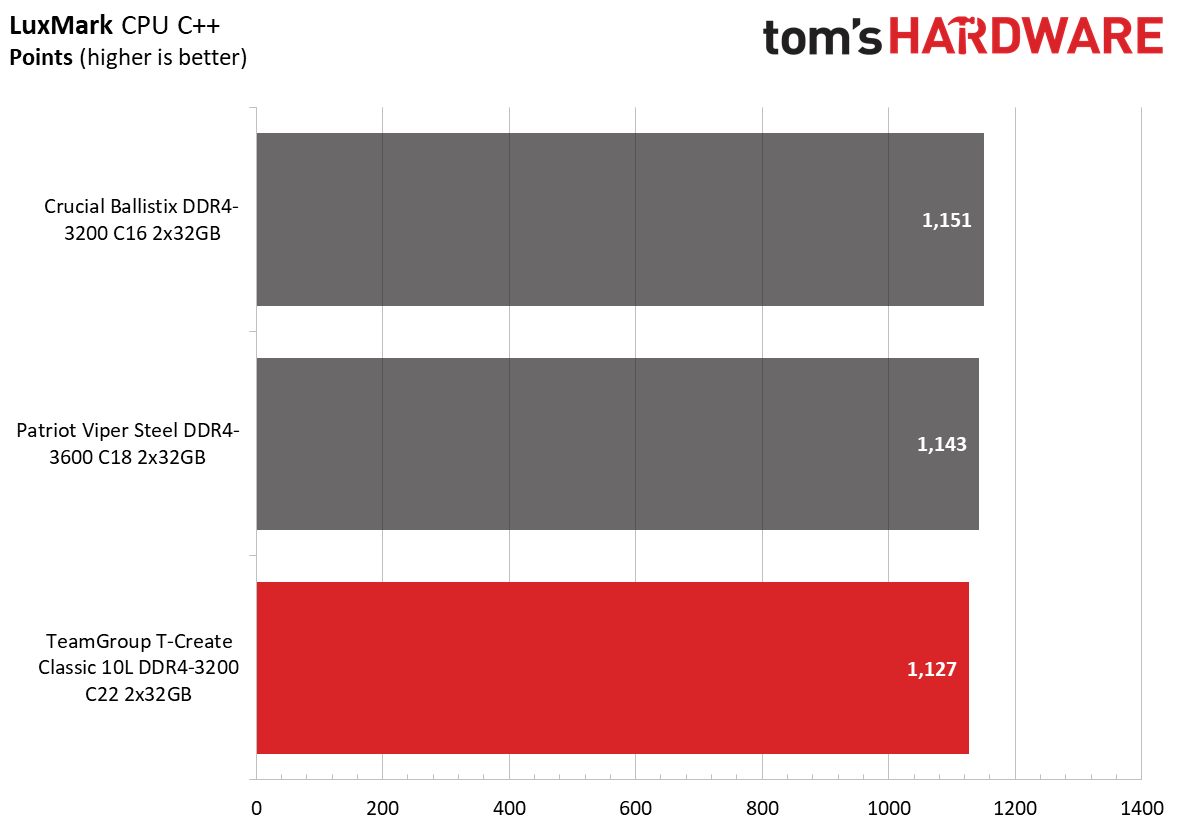
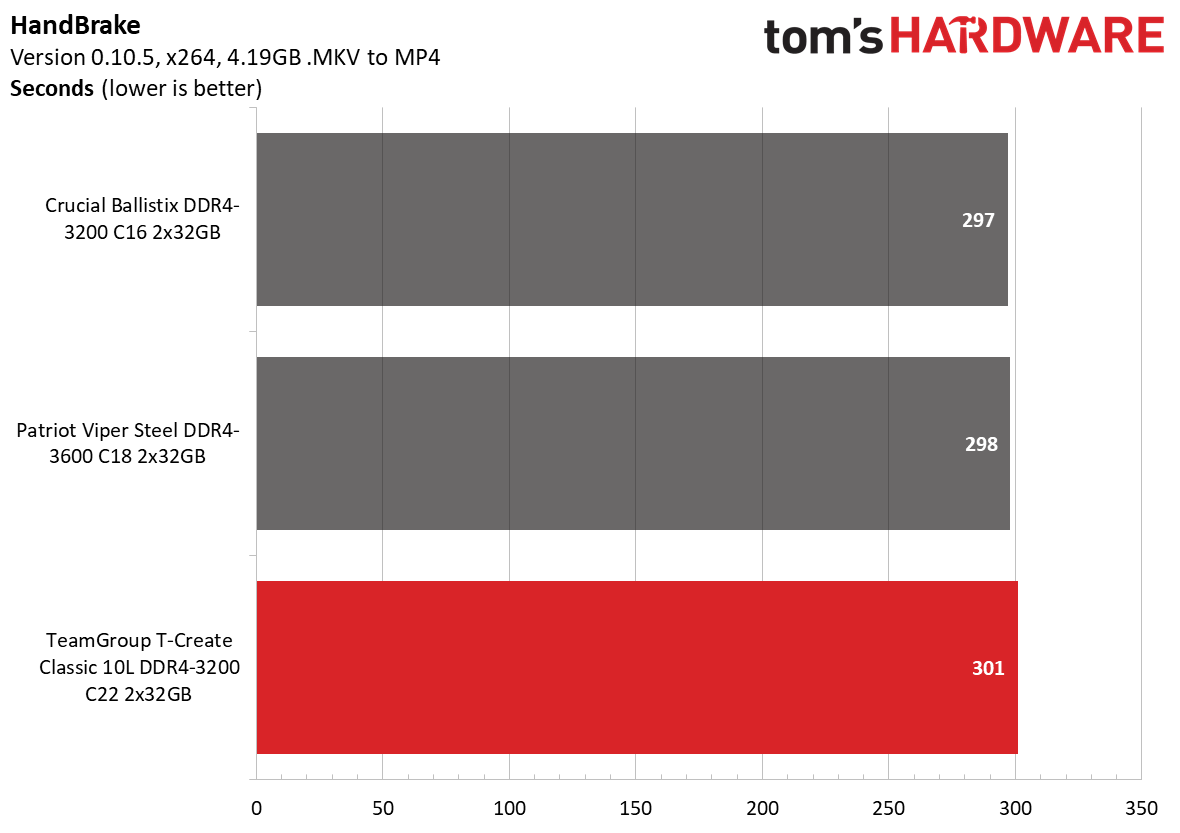
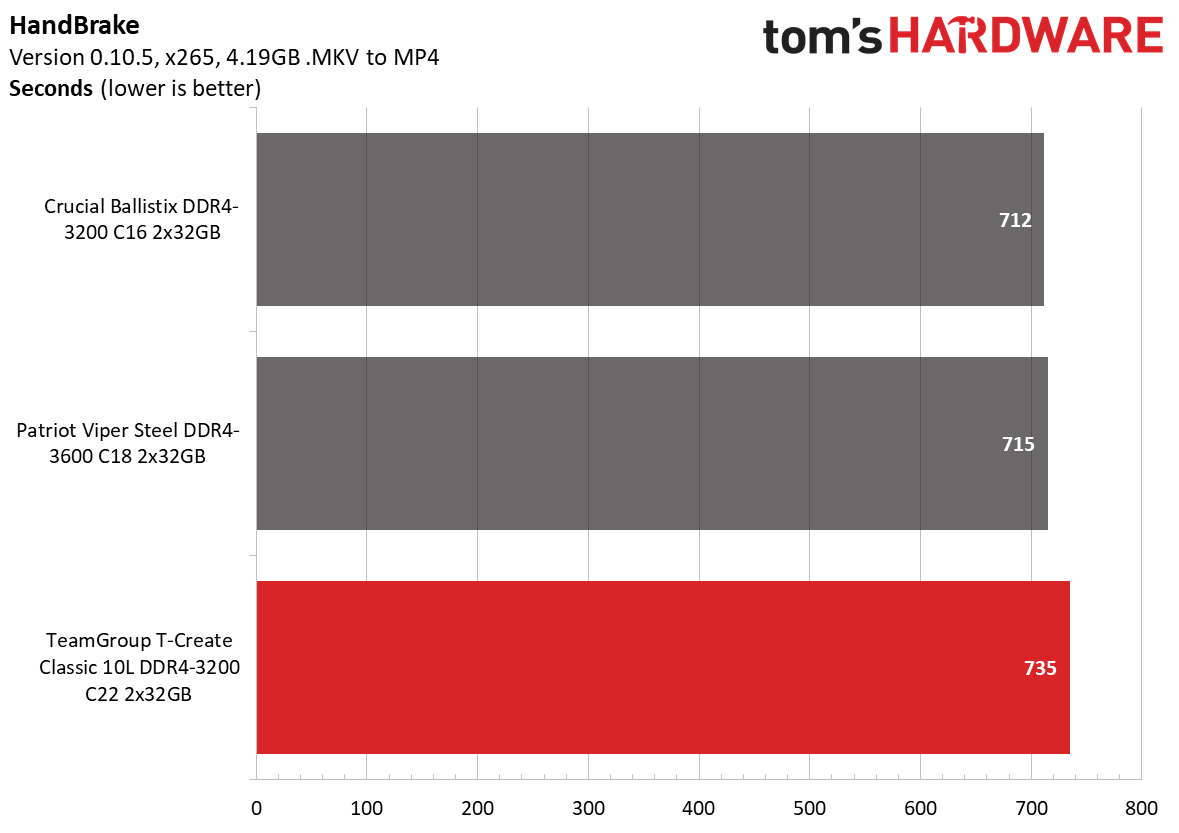
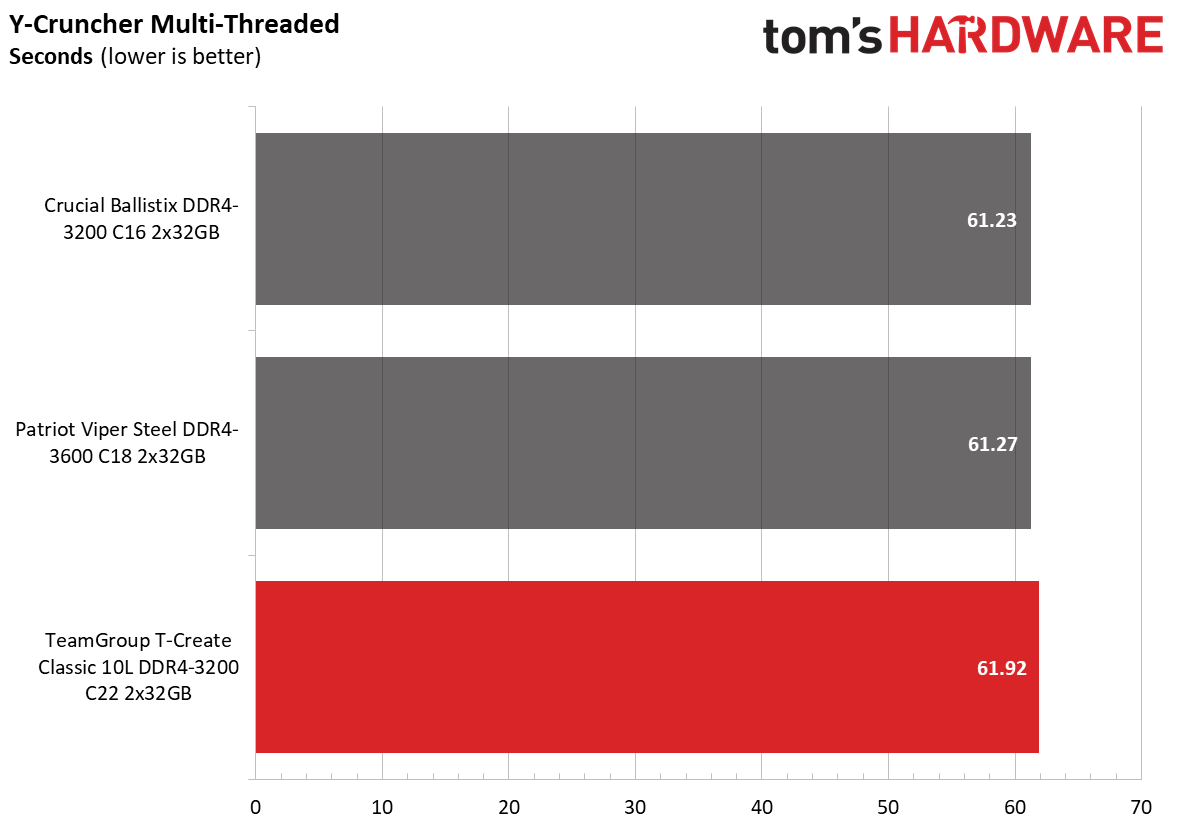
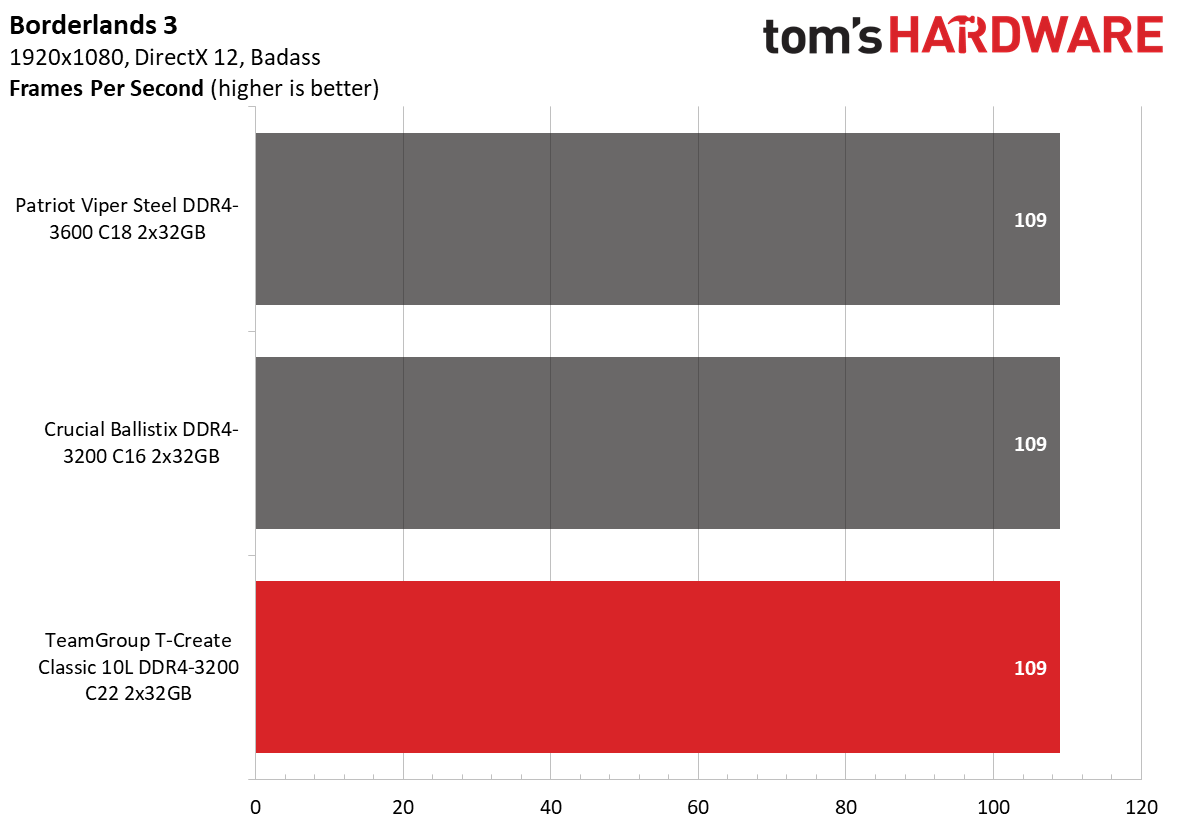

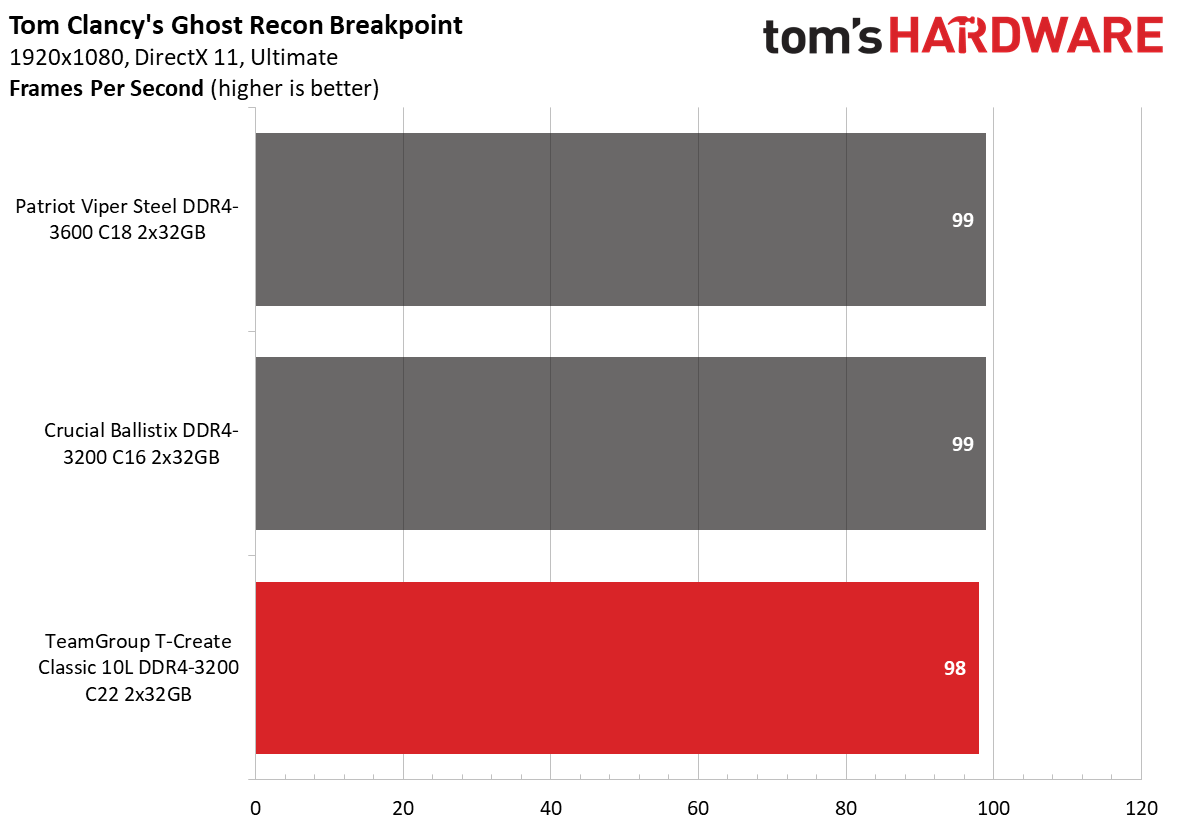
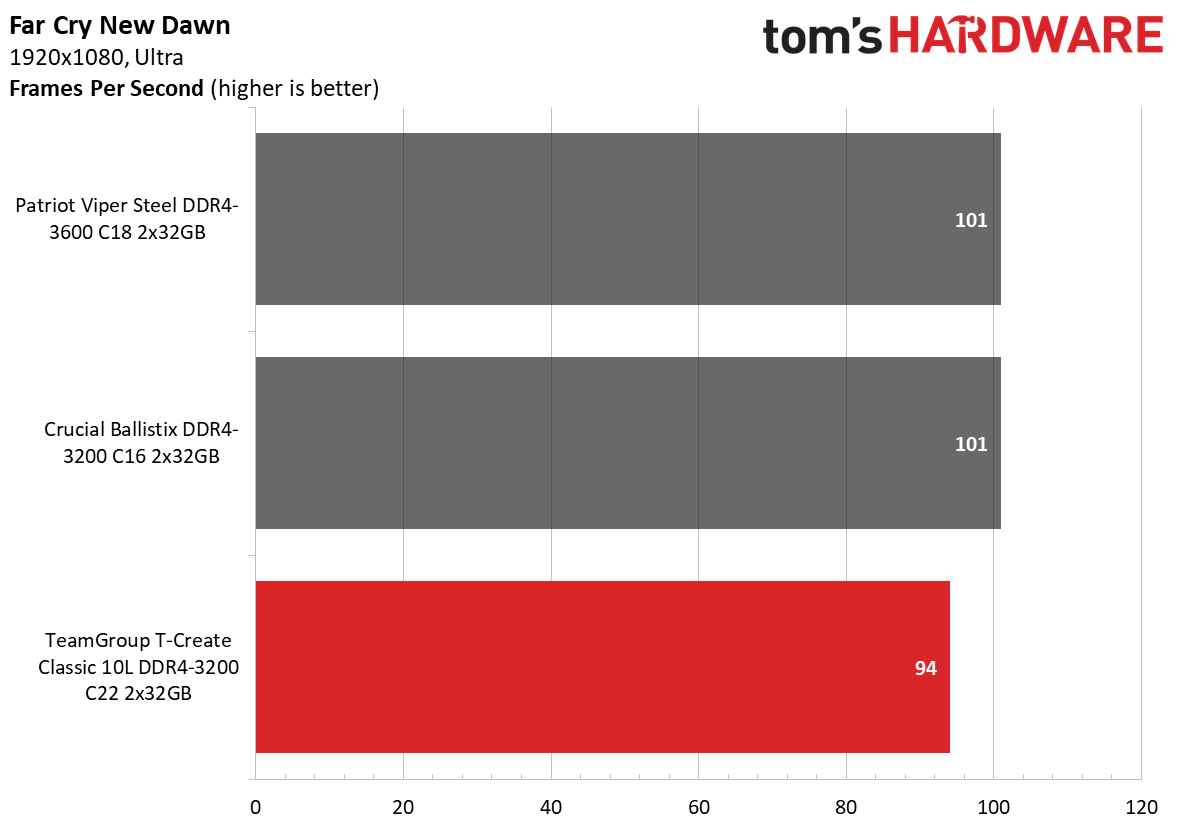
On the other hand, the margin between the Classic 10L and its closest competitor, the Ballistix DDR4-3200 C16, wasn't as significant on the AMD platform. On this occasion, TeamGroup's offering outperformed the rest during the Adobe Premiere 2020 test.
Get Tom's Hardware's best news and in-depth reviews, straight to your inbox.
Overclocking and Latency Tuning
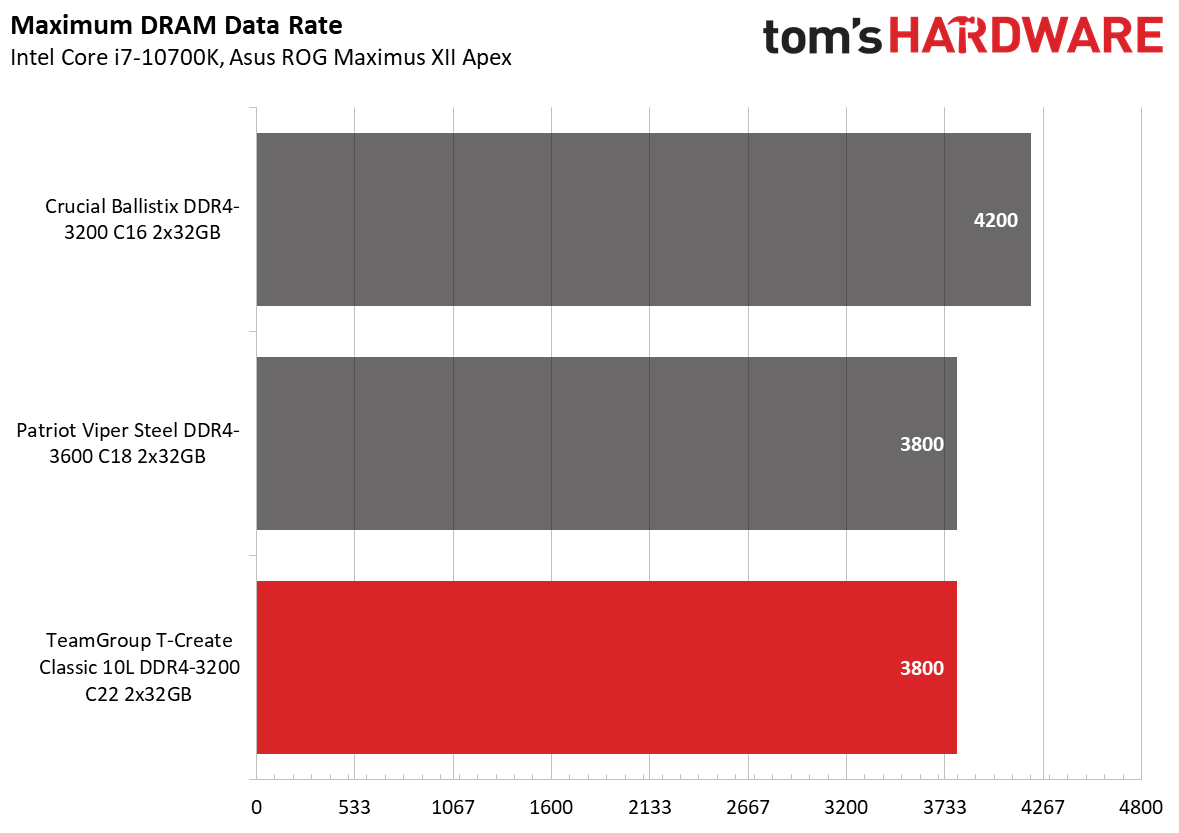
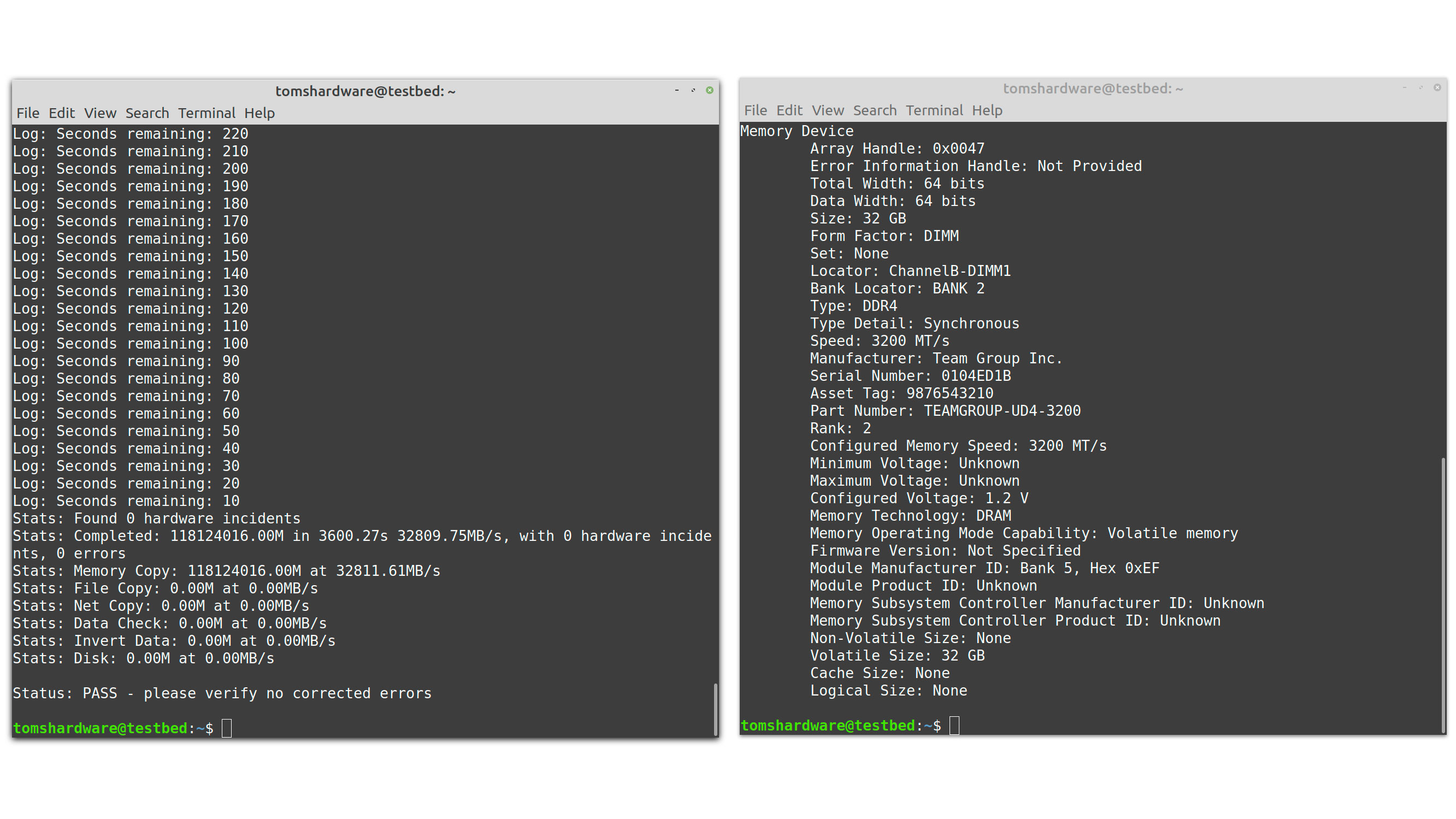
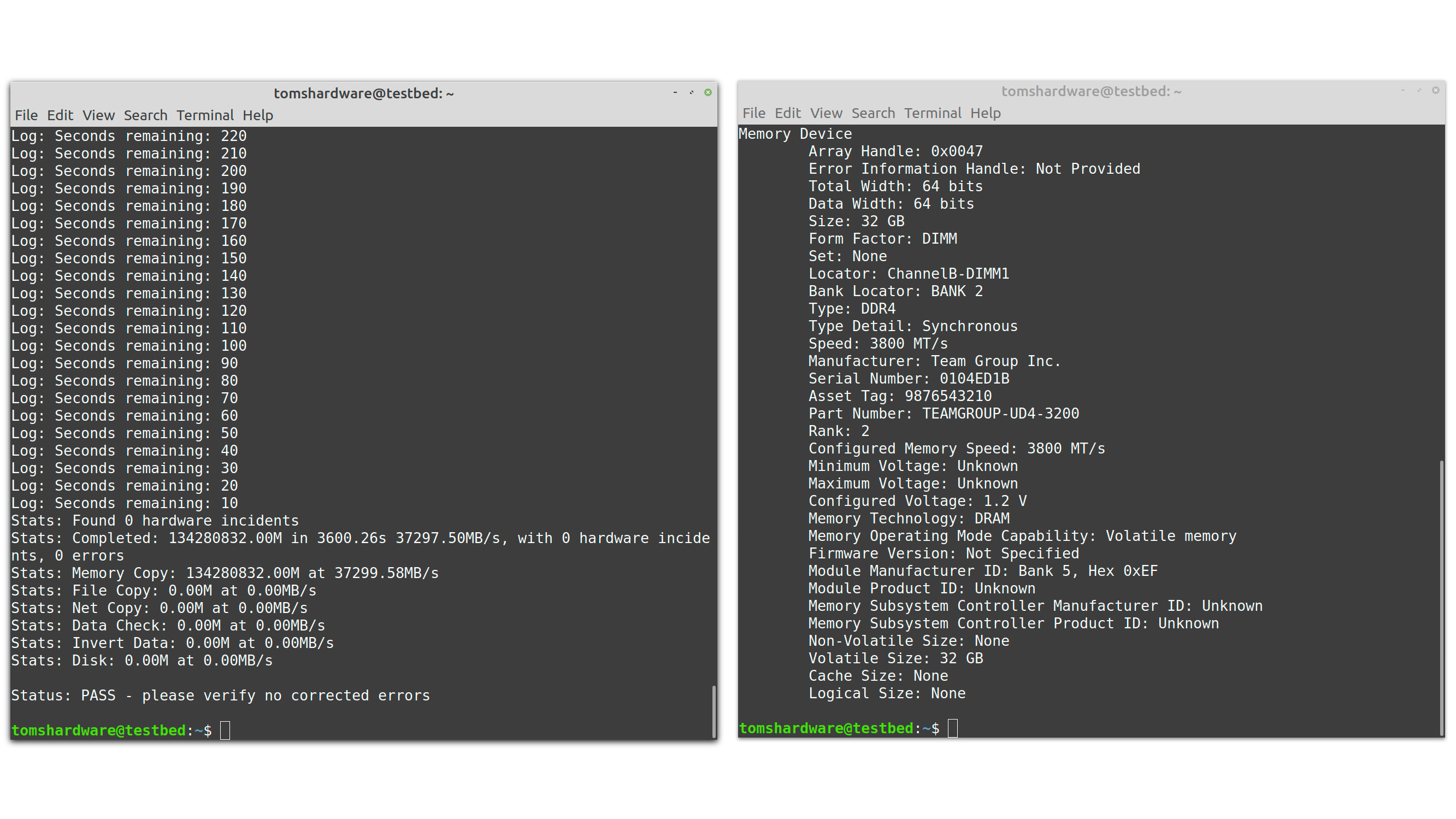
The Classic 10L did fine in the overclocking department. Upping the DRAM voltage from 1.2V to 1.45V netted us an overclock of 600 MHz. Surprisingly, the memory modules were stable with 21-21-21-41 timings.
Lowest Stable Timings
| Memory Kit | DDR4-3200 (1.45) | DDR4-3600 (1.45V) | DDR4-3800 (1.45V) | DDR4-4200 (1.45V) |
|---|---|---|---|---|
| Patriot Viper Steel DDR4-3600 C18 | N/A | 17-19-19-39 (2T) | 21-21-21-41 (2T) | N/A |
| Crucial Ballistix DDR4-3200 C16 | 14-16-16-36 (2T) | N/A | N/A | 18-22-22-42 (2T) |
| TeamGroup T-Create Classic 10L DDR4-3200 C22 | 18-18-18-38 (2T) | N/A | 21-21-21-41 | N/A |
If we stick to DDR4-3200 and a 1.45V DRAM voltage, we could run the memory modules with 18-18-18-38 timings. It's a pretty good result actually since the standard timings are 22-22-22-52. The effort does require a 20.8% increase in voltage, though.
Bottom Line
The Classic 10L DDR4-3200 C22 is geared towards consumers that just want a DDR4-3200 memory kit they can install and forget about. In order to achieve this, TeamGroup had to stick to JEDEC's DDR4-3200AA speed bin that commands 22-22-22 timings. You still have to make sure that both your processor and motherboard natively support DDR4-3200, which shouldn't be an issue for most modern hardware. Bear in mind that you're giving up performance for the plug-n-play experience, though.
TeamGroup prices the Classic 10L DDR4-3200 C22 at $216.99, making it the second cheapest 64GB (2x32GB) memory kit on the market. It's an appealing option if you're bound by a very tight budget. If not, the Vulcan Z DDR4-3200 64GB (2x32GB), which hails from the same camp, sells for $23 more and comes with much better primary timings configured to 16-18-18-38. It does draw 1.35V as opposed to the 1.2V on the Classic 10L and will require the consumer to enable XMP, but it's a small compromise if you value performance above than anything else.

Zhiye Liu is a news editor, memory reviewer, and SSD tester at Tom’s Hardware. Although he loves everything that’s hardware, he has a soft spot for CPUs, GPUs, and RAM.
-
neojack thanks for the articleReply
i'm confused by the OC :
"Upping the DRAM voltage from 1.2V to 1.45V netted us an overclock of 200 MHz. "
3200+200 = 3400mhz but in the charts we can see it at the 3800mhz mark -
Nakal That's because 3200 isn't the speed in Megahertz.; It is mega-transfers. 1600 is the mhz. Since It is DDR RAM: 1600mhz 2 is 3200 1800mhz *2 is 3600. 19002 would be 3800mhz.Reply -
sabishiihito The ICs on these can't be C-die or D-die since Hynix doesn't have any 16Gbit chips of those particular revisions in the wild yet. Currently they have AJR (H5ANAG8NAJR ) and MJR (H5ANAG8NMJR) so these must use one of those. I'm betting on AJR as those are the only ones with the -XNC (3200C22) JEDEC bin in mass production.Reply -
neojack @Nakal makes sense, thanksReply
but in that case 3200 + 400 = 3600 , not 3800
just a typo probably -
Spectre4444 while I get the annoyance of changing a couple of settings just to get memory to run at ( or even near) rated speed, who exactly is so hardware inexperienced they cannot change memory setting yet have a technical need for 64GB ? Plug n play is great but with these timings it seems you are " throwing the baby out with the bath water" even if this memory is inexpensive.Reply
